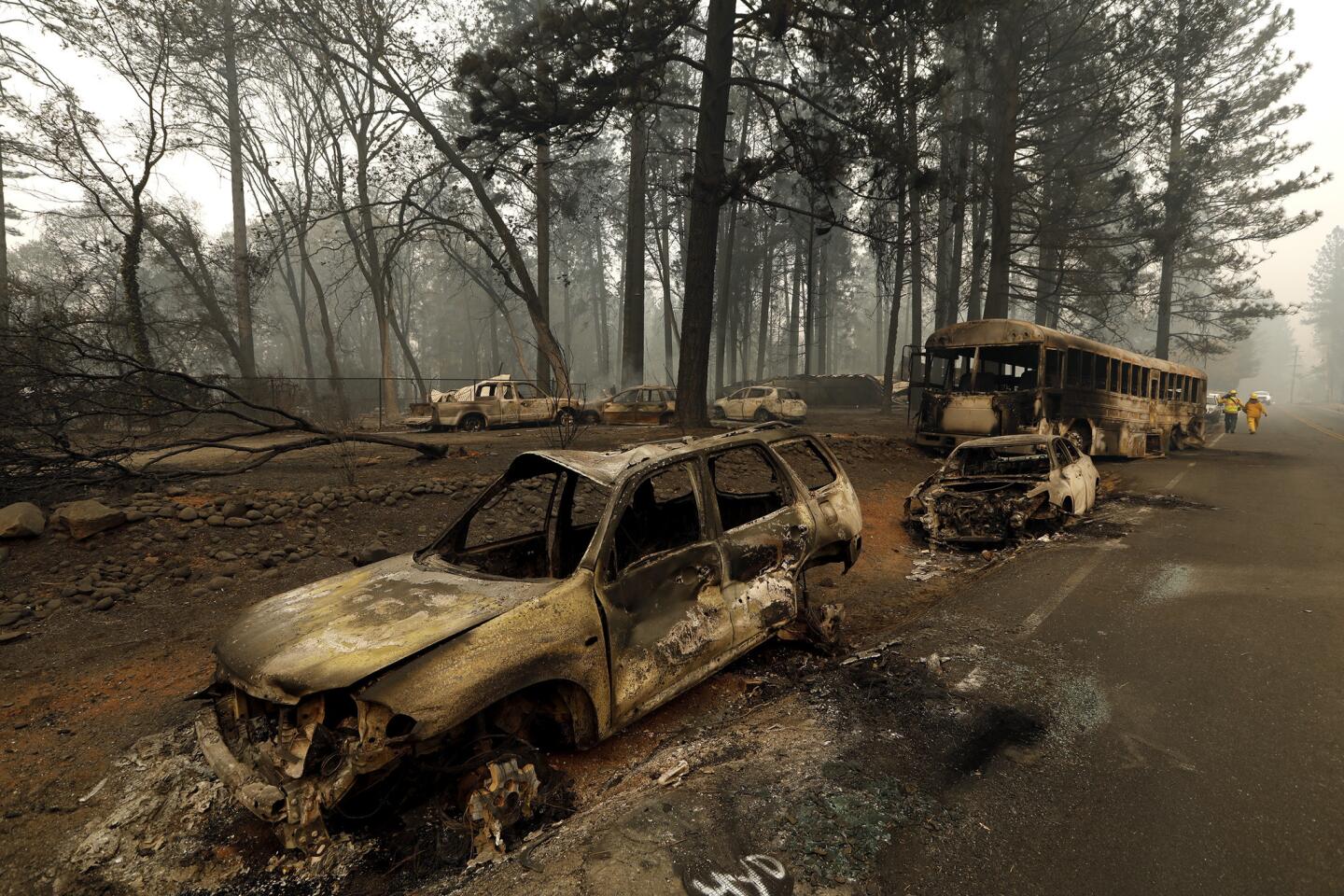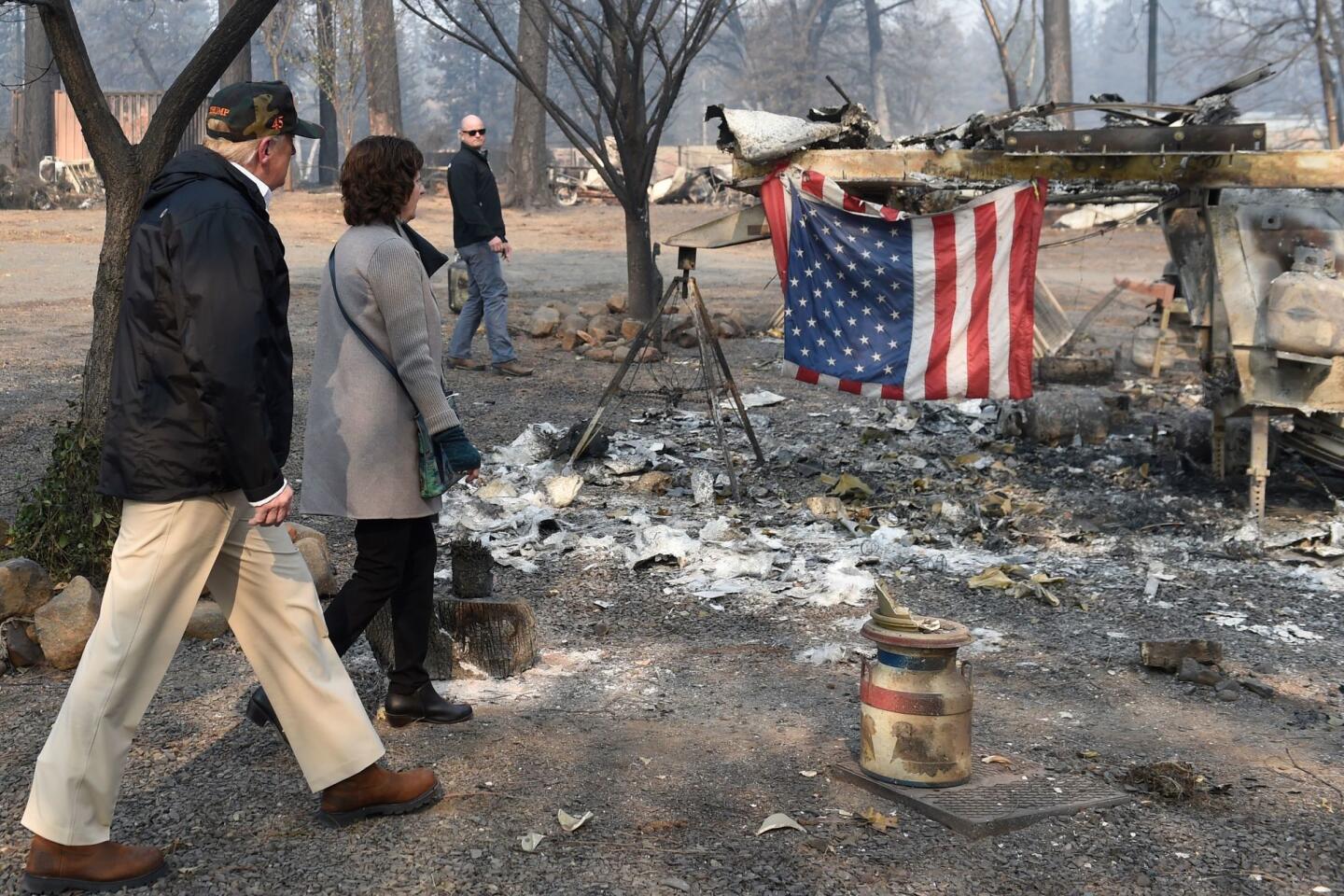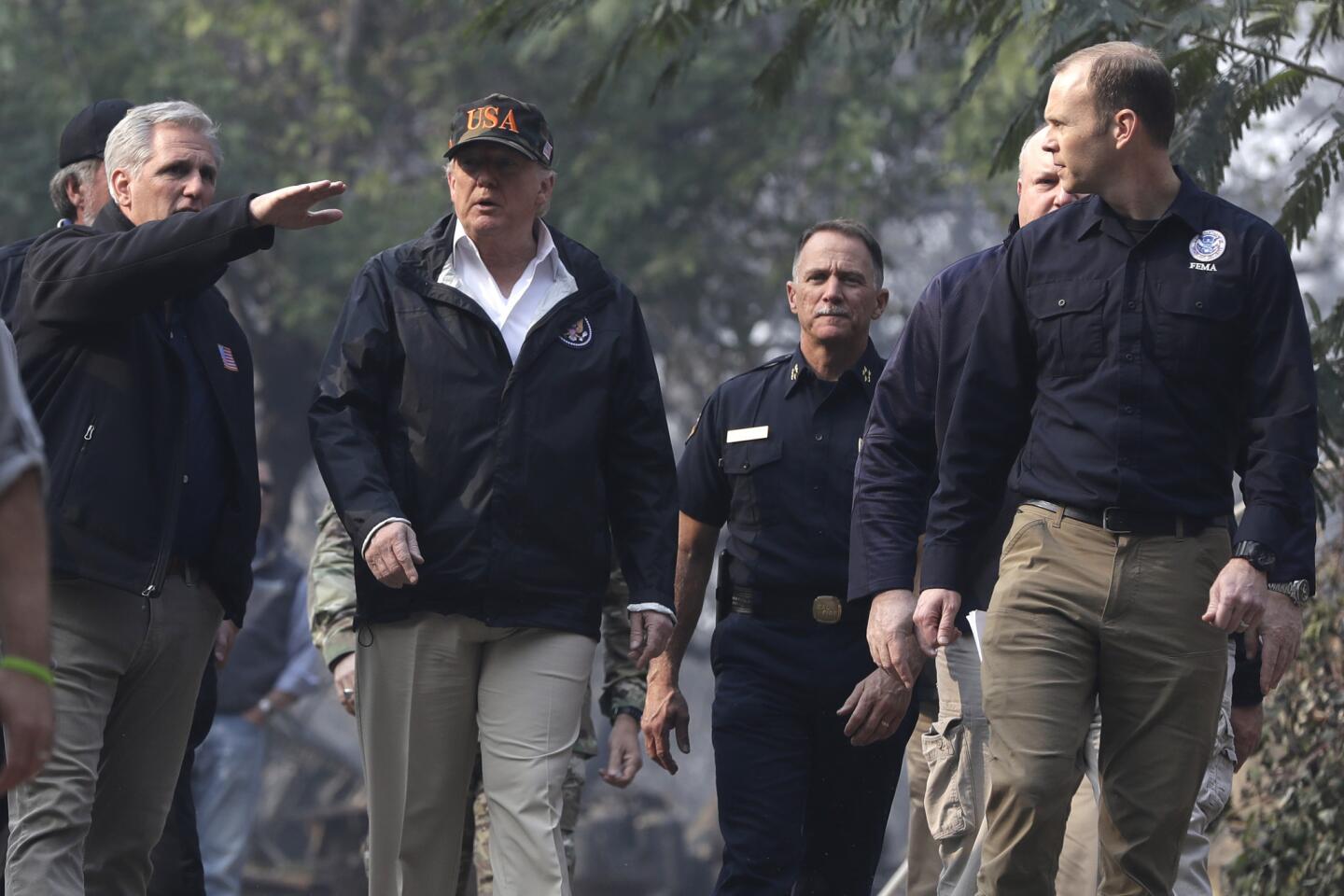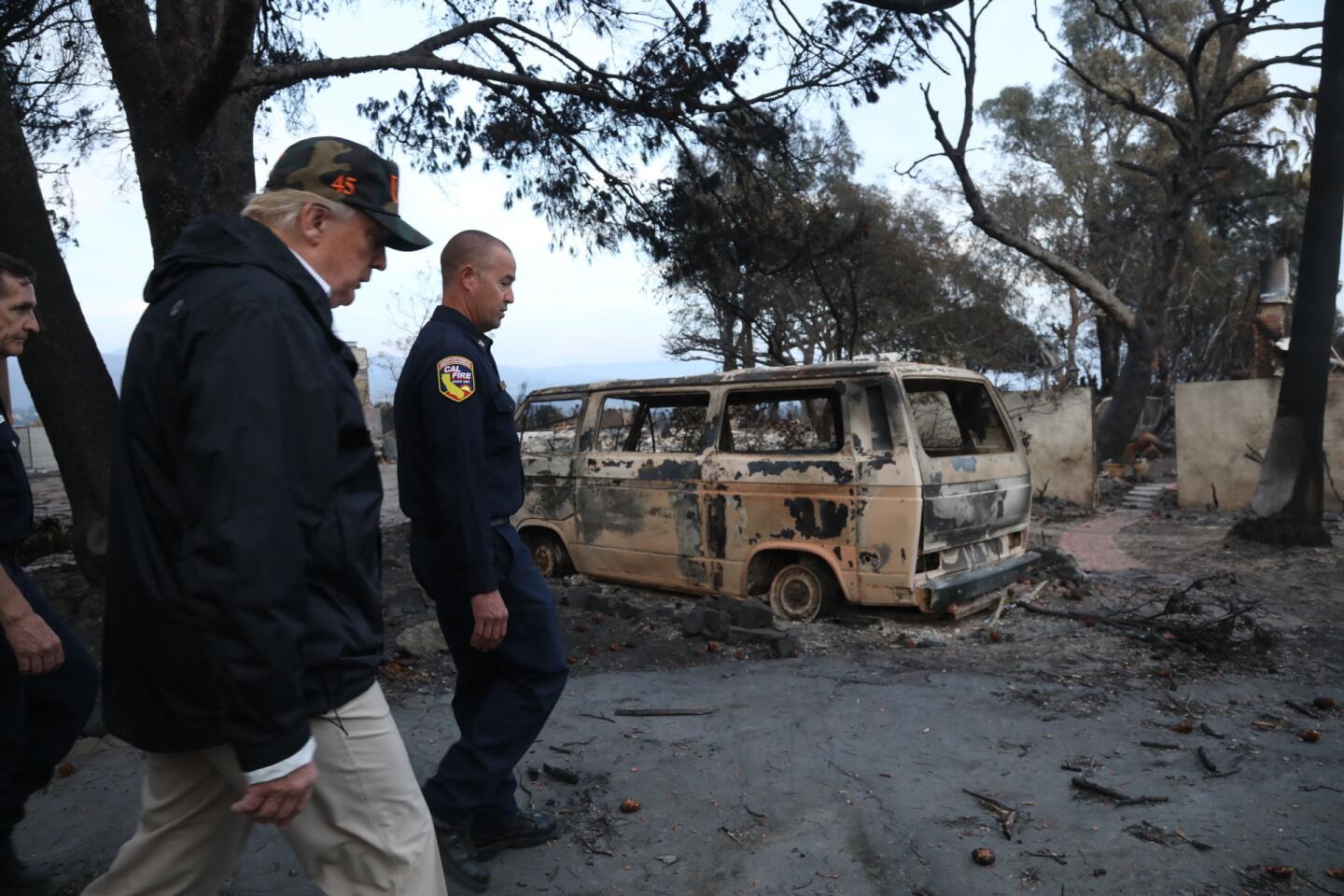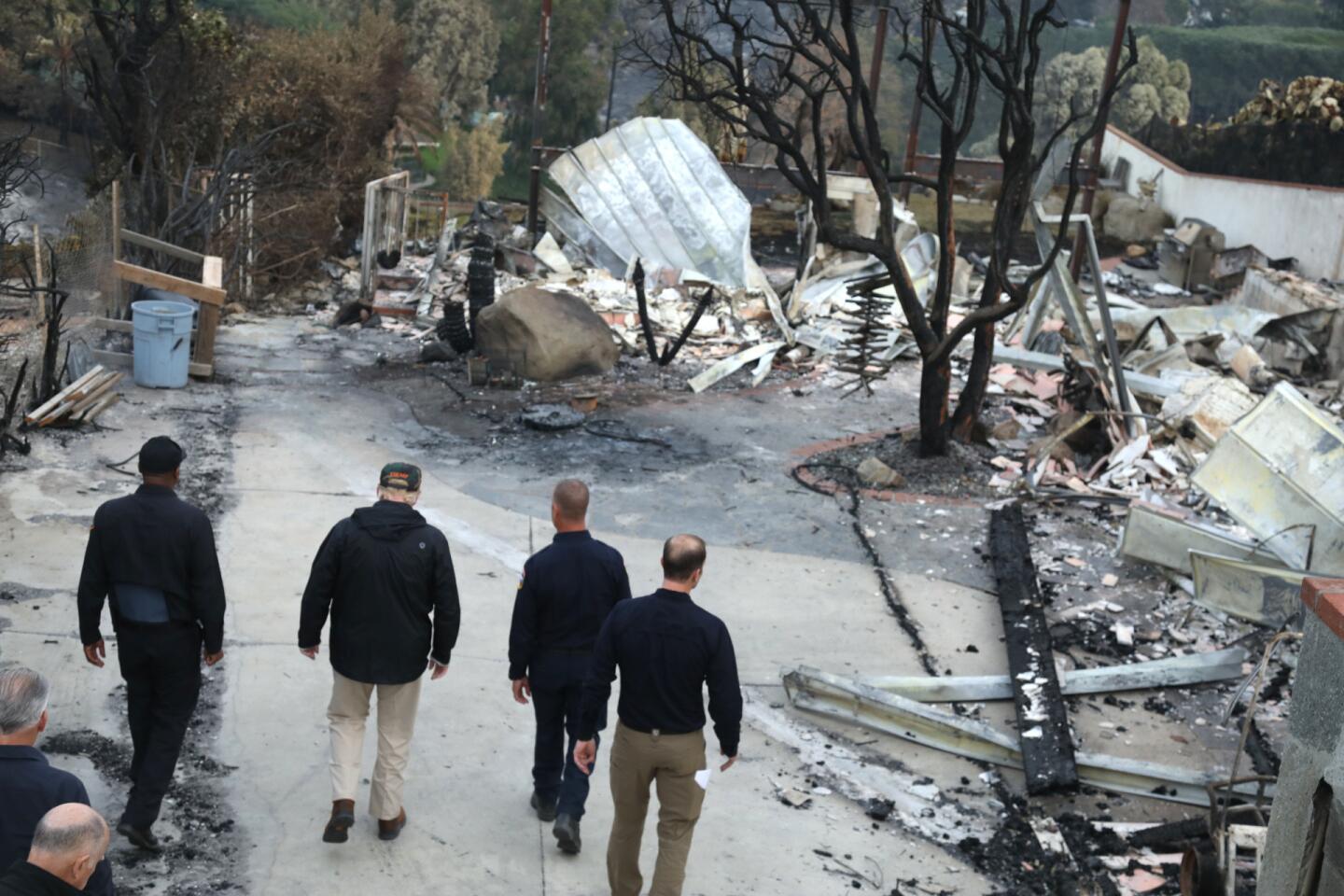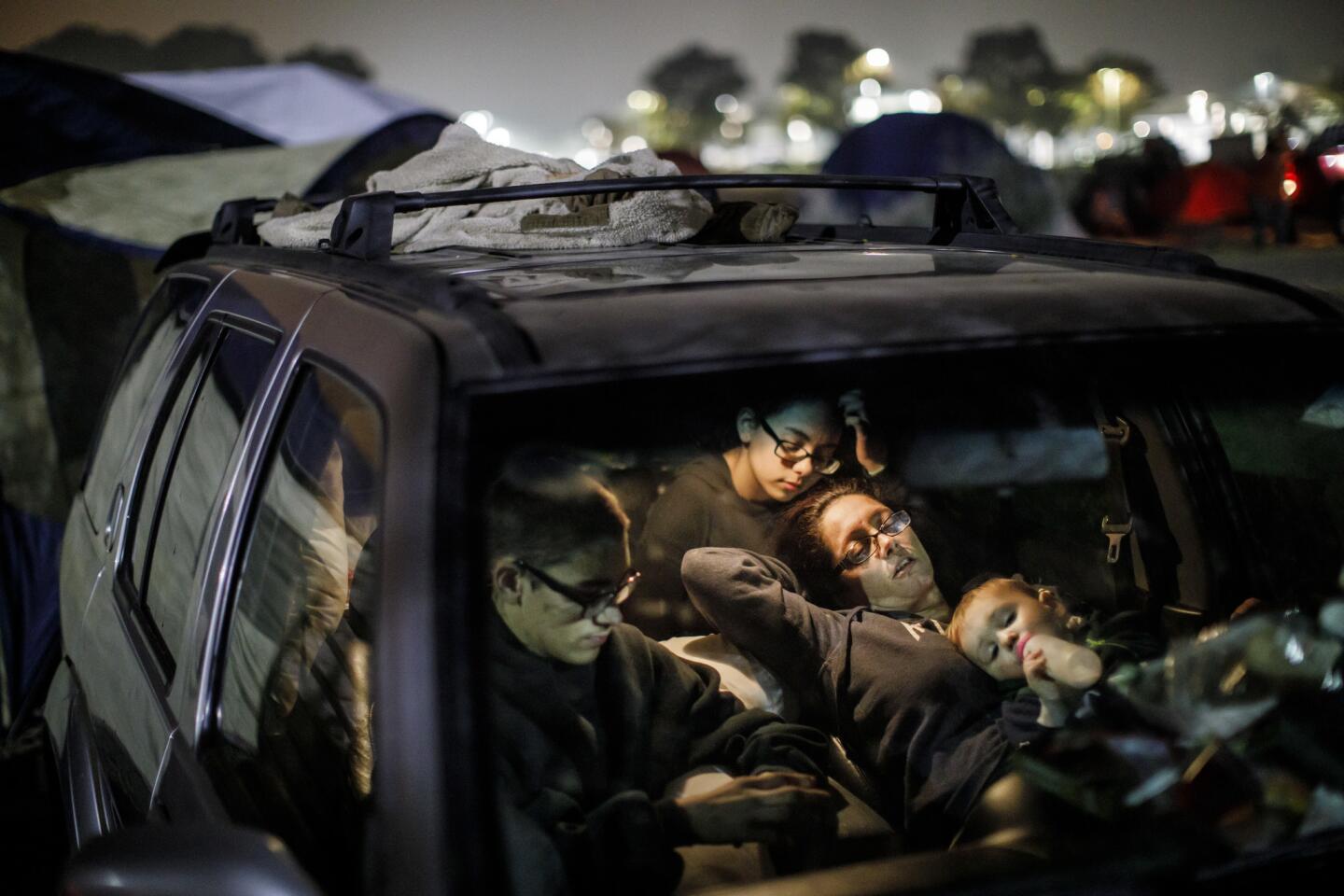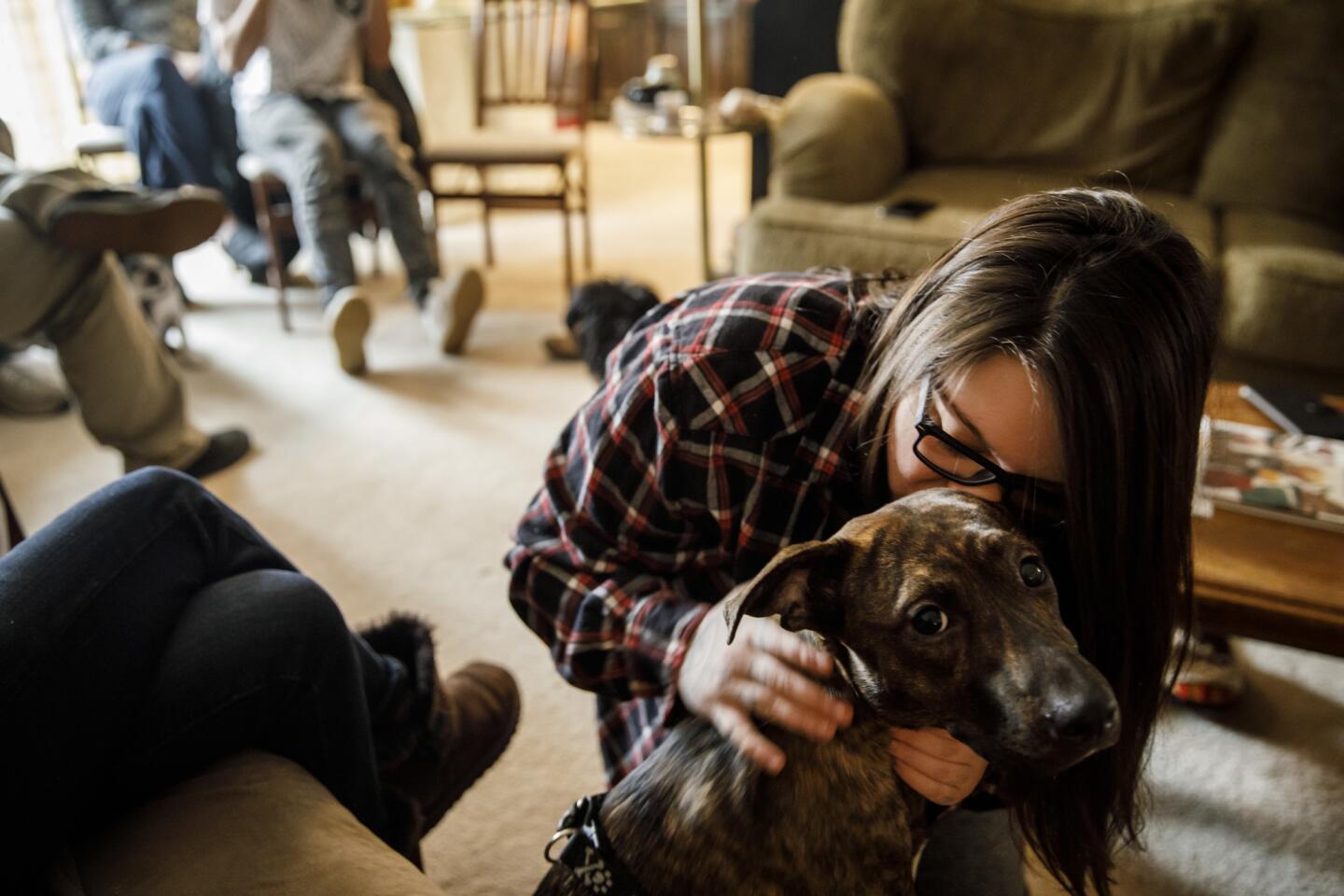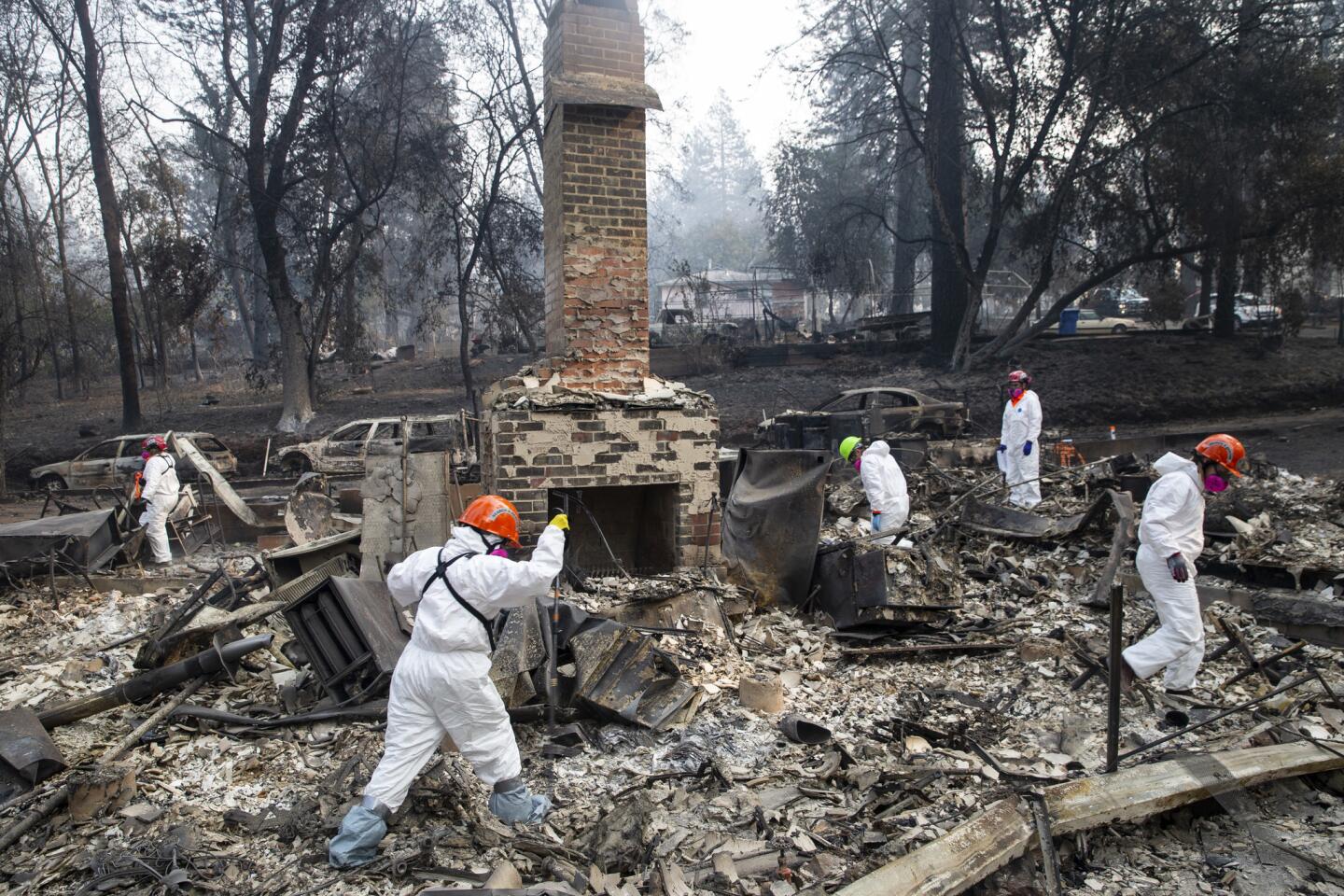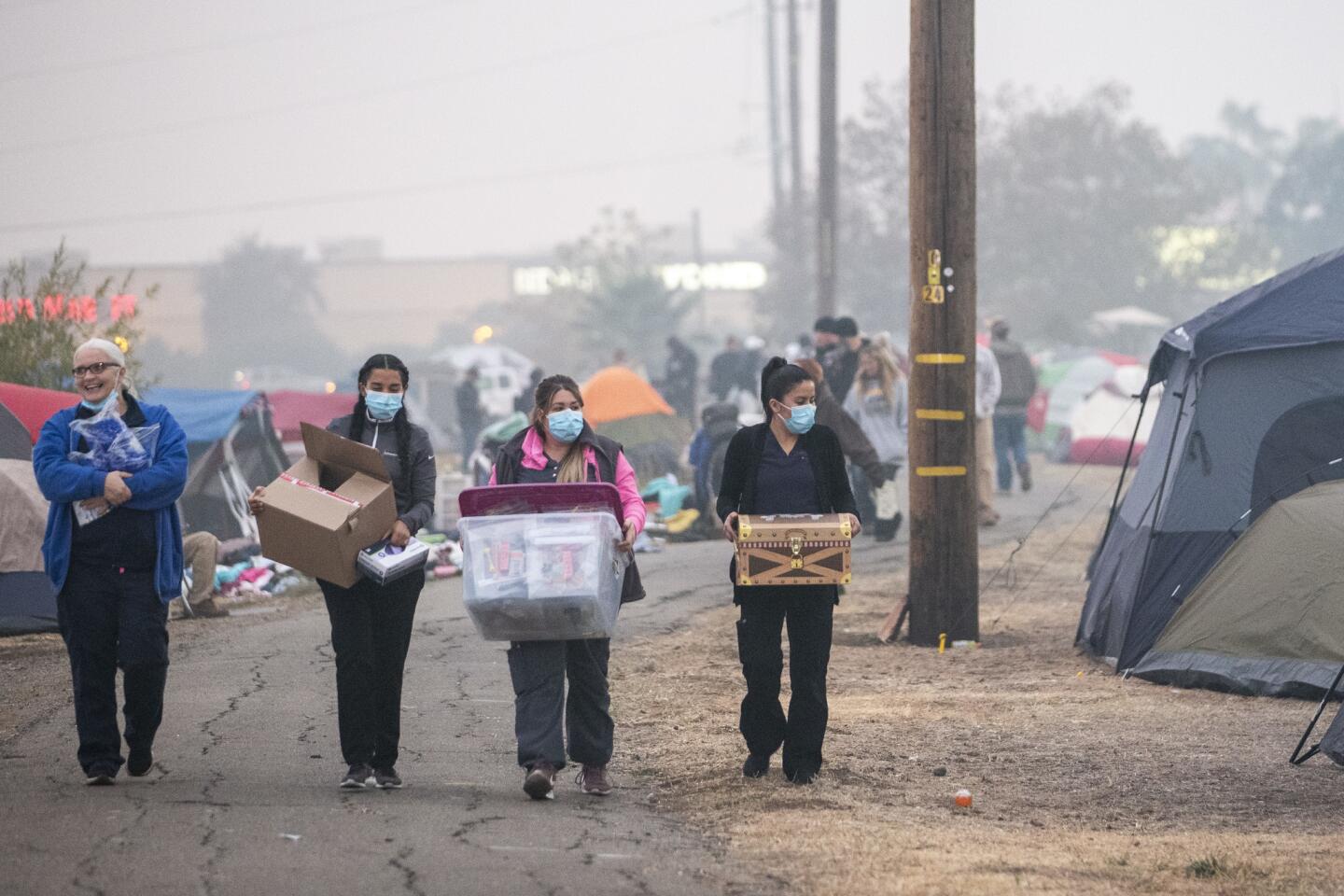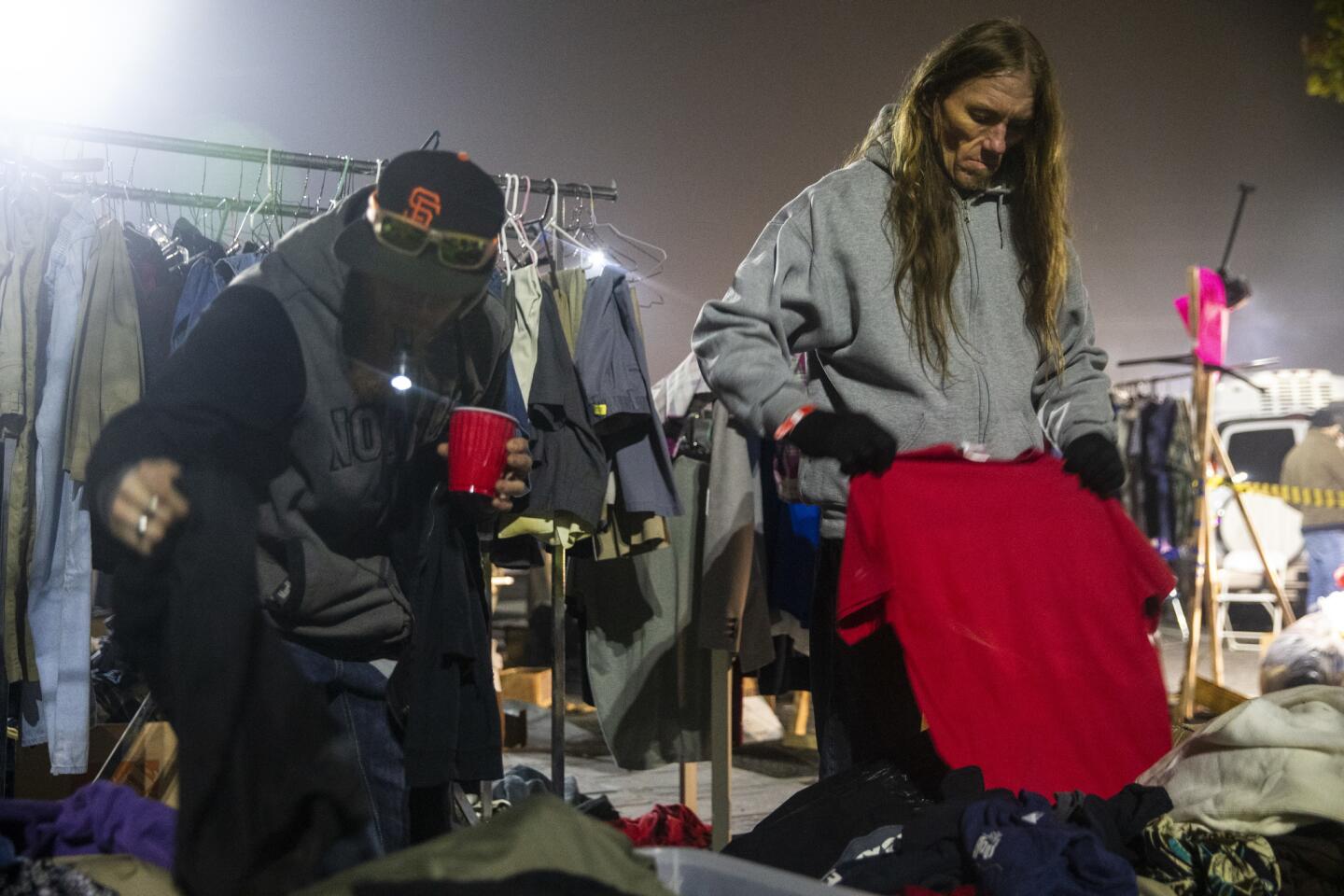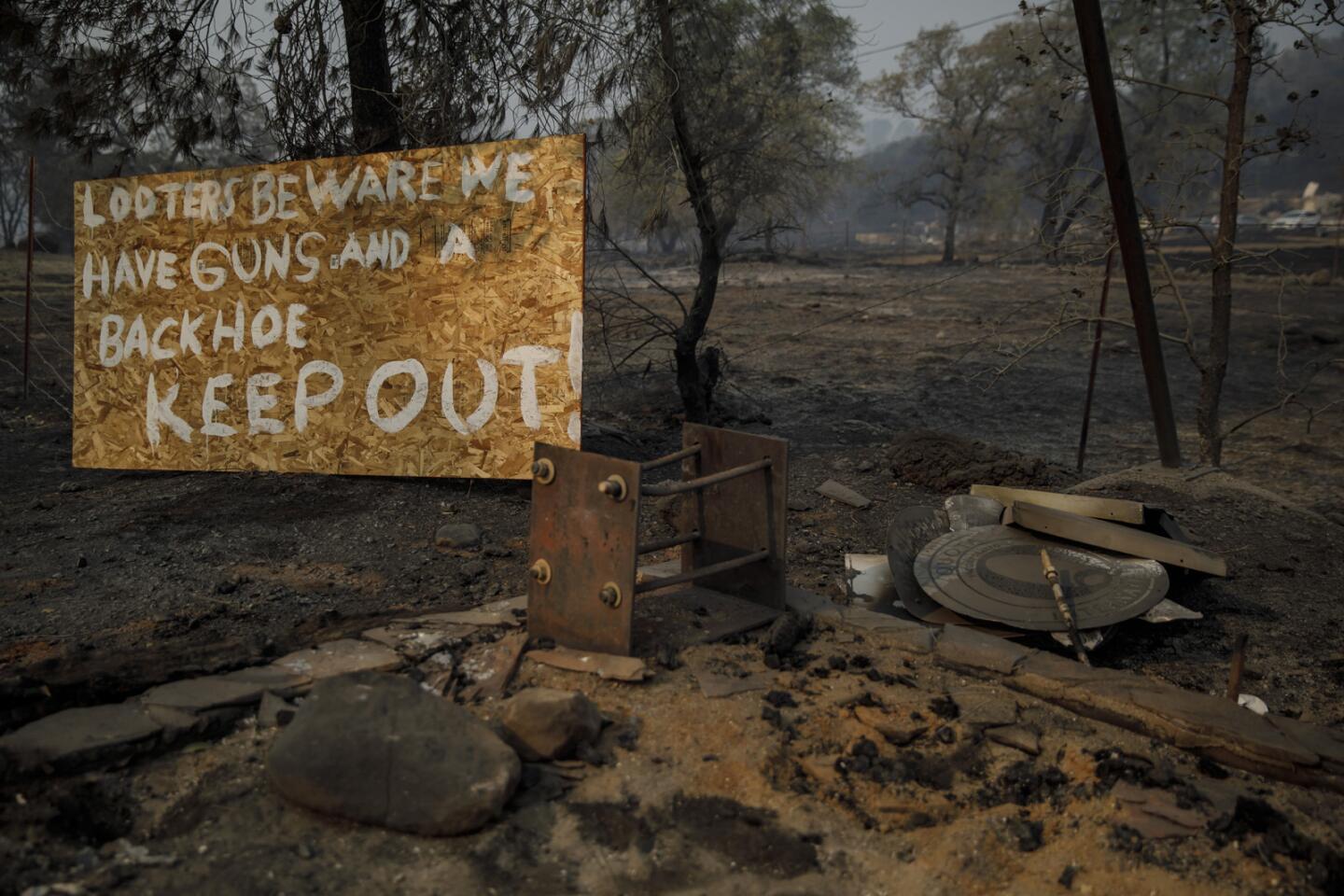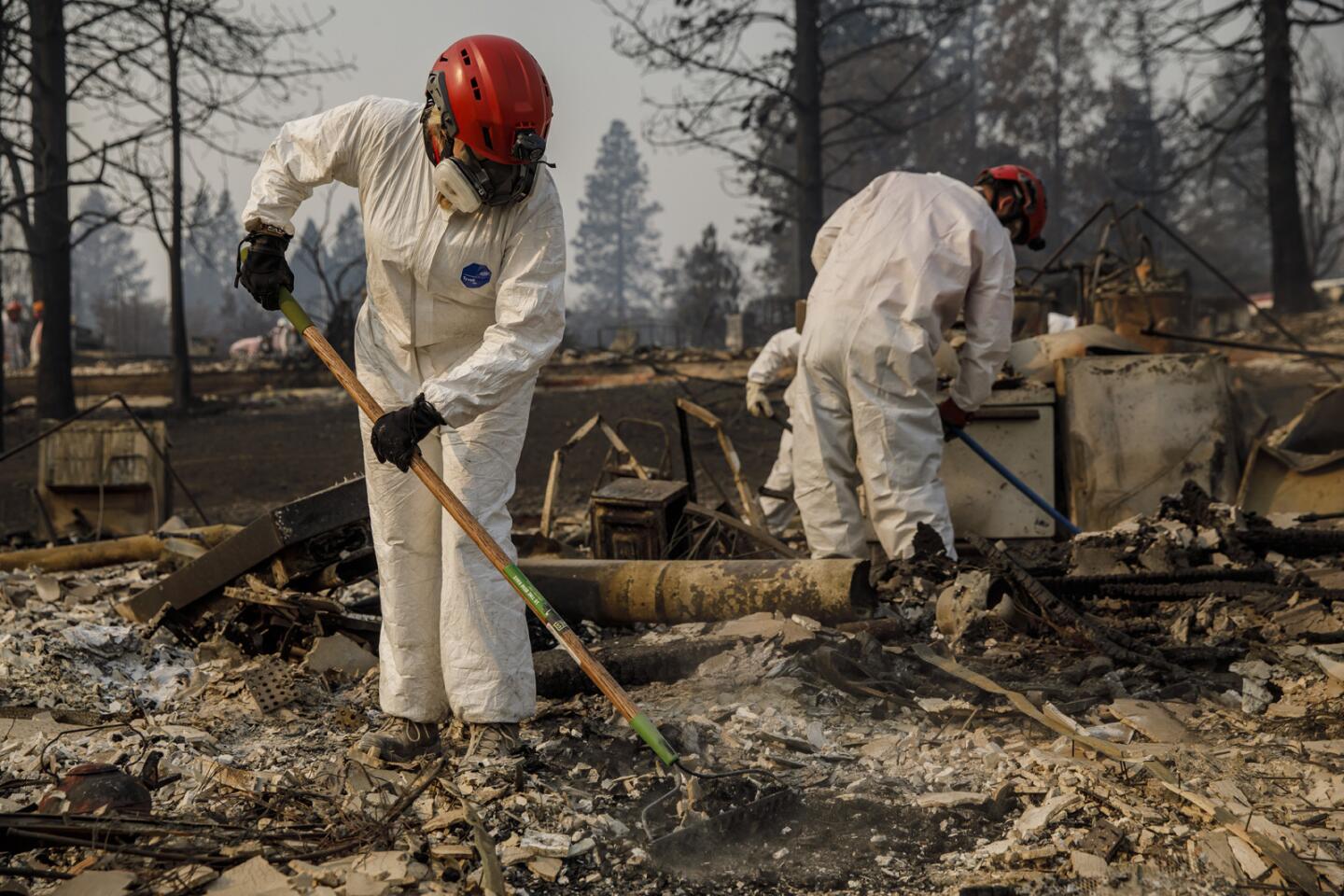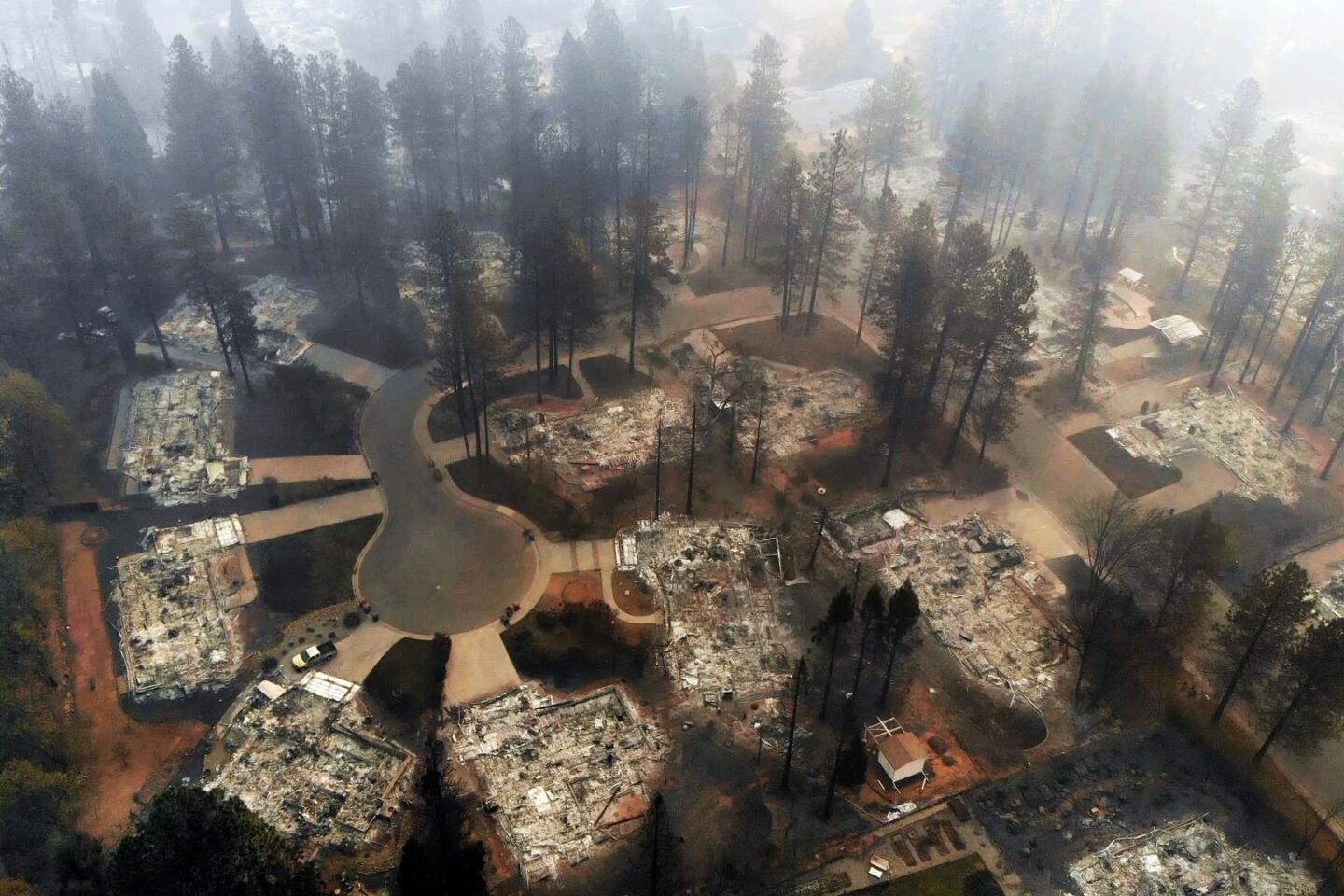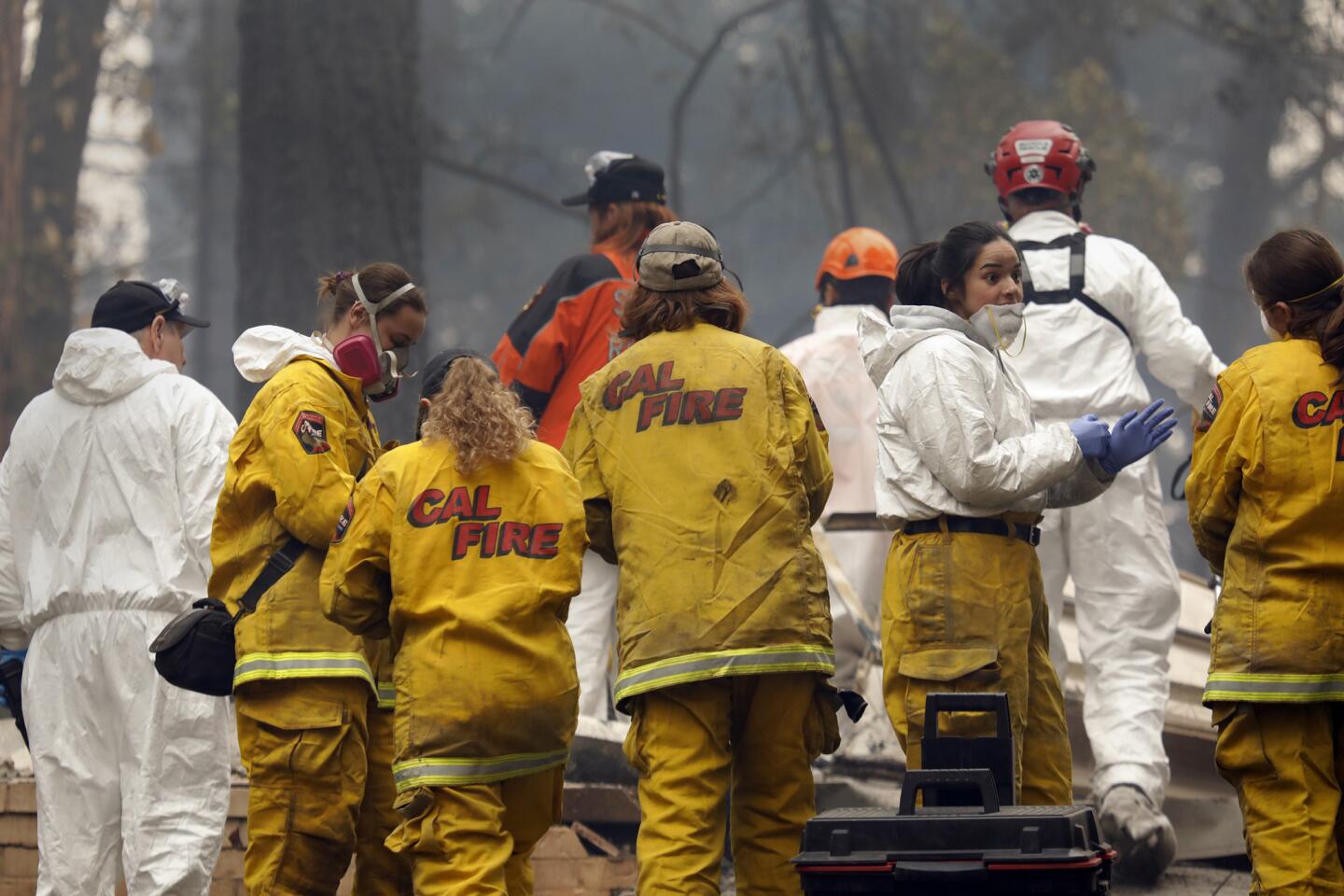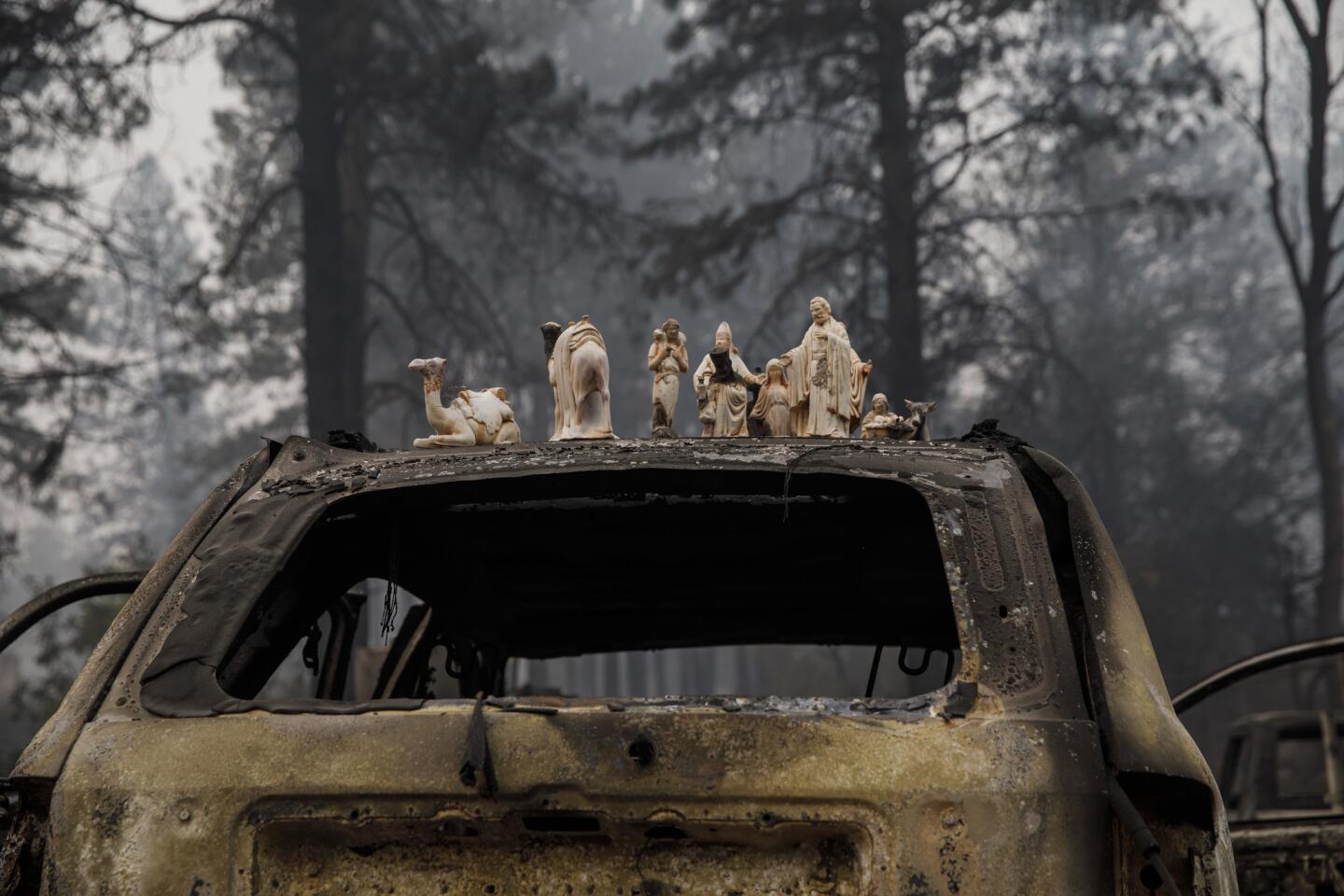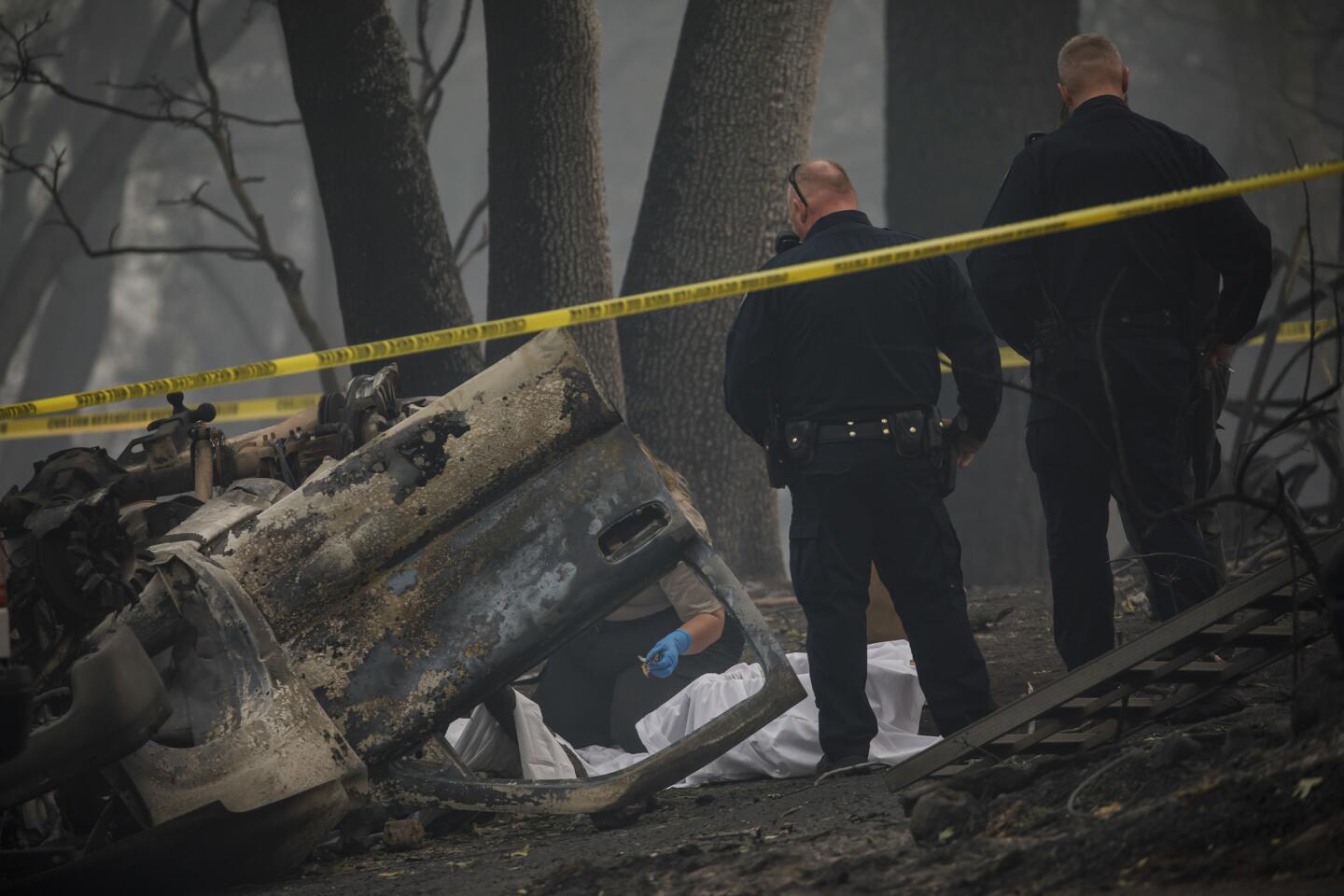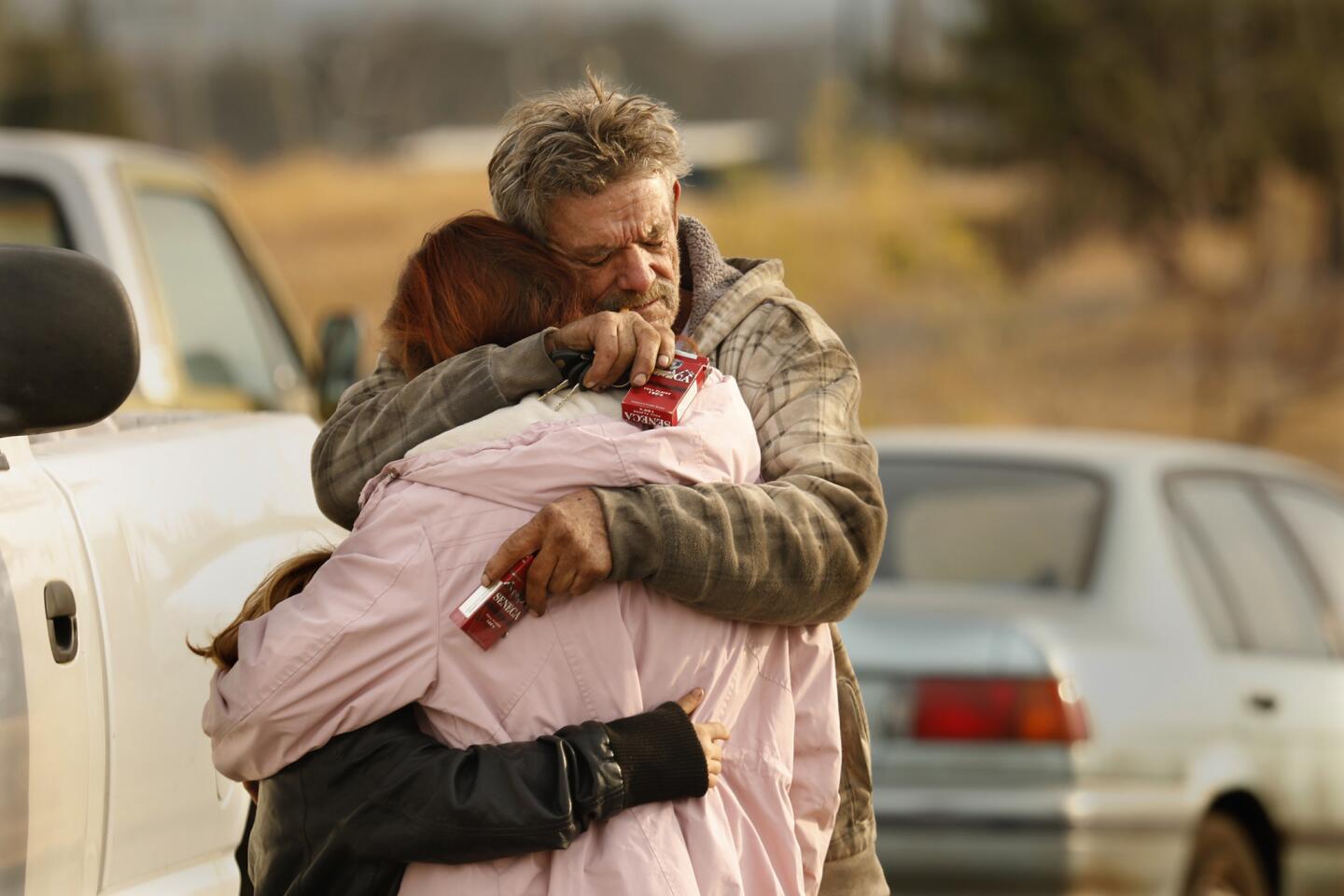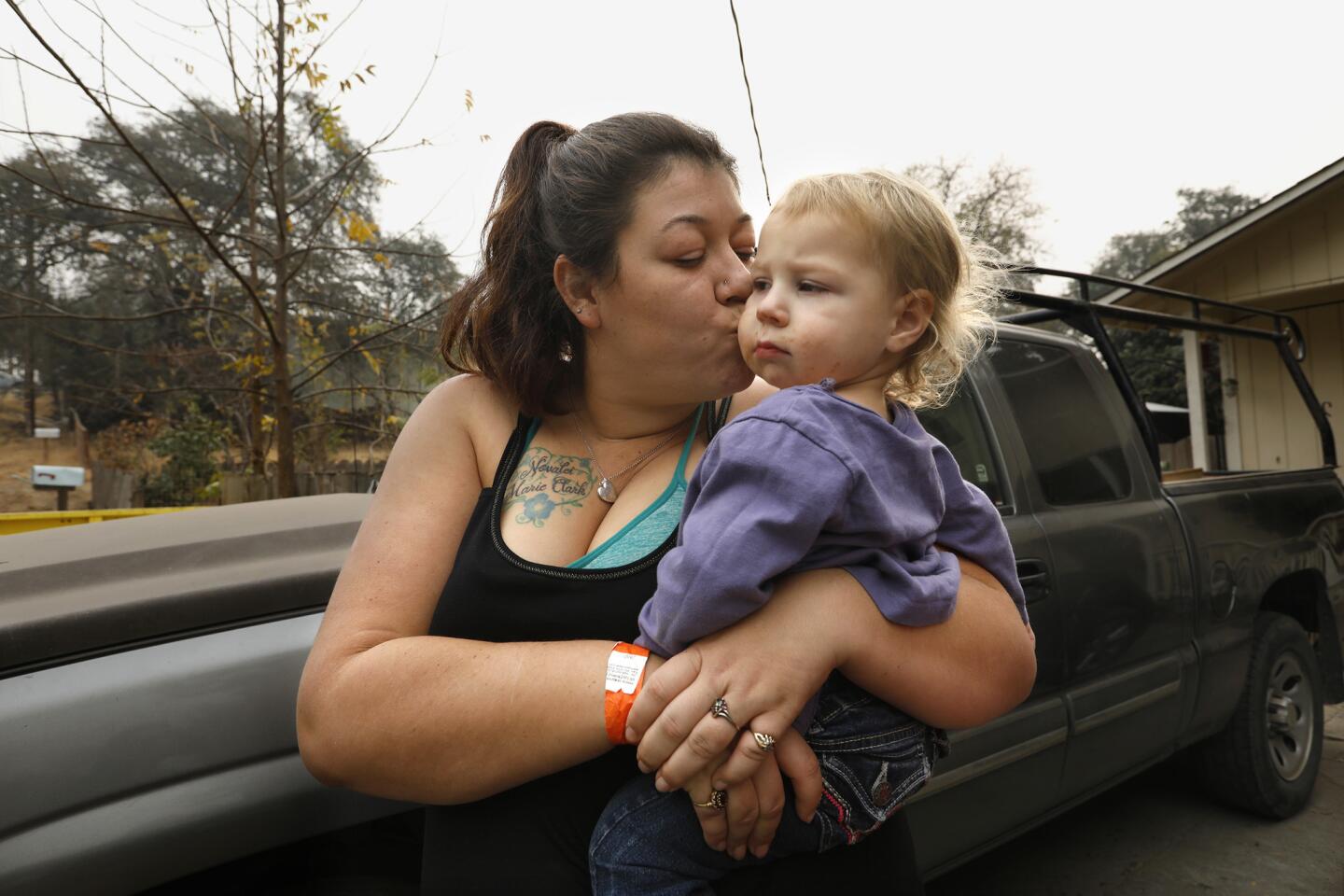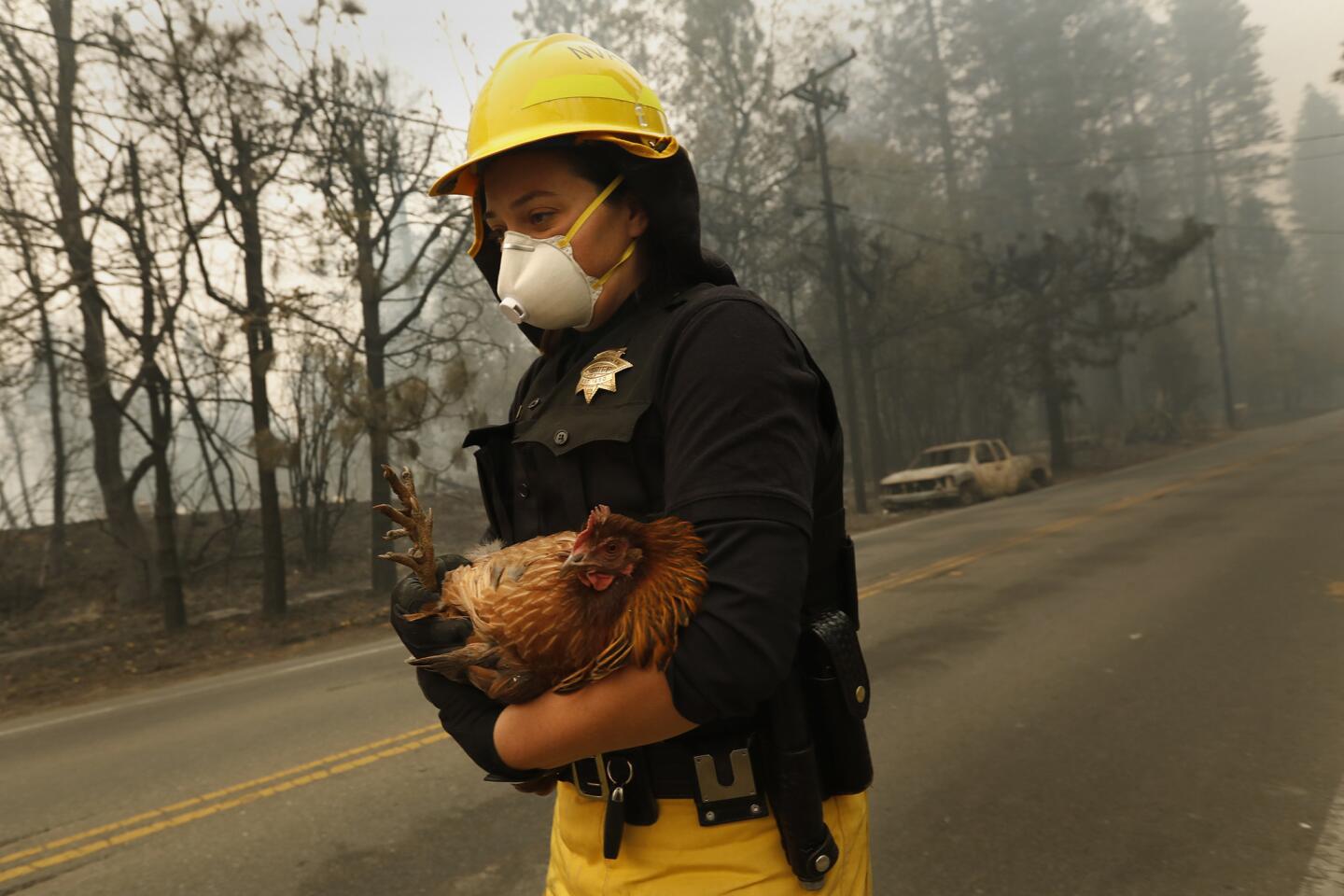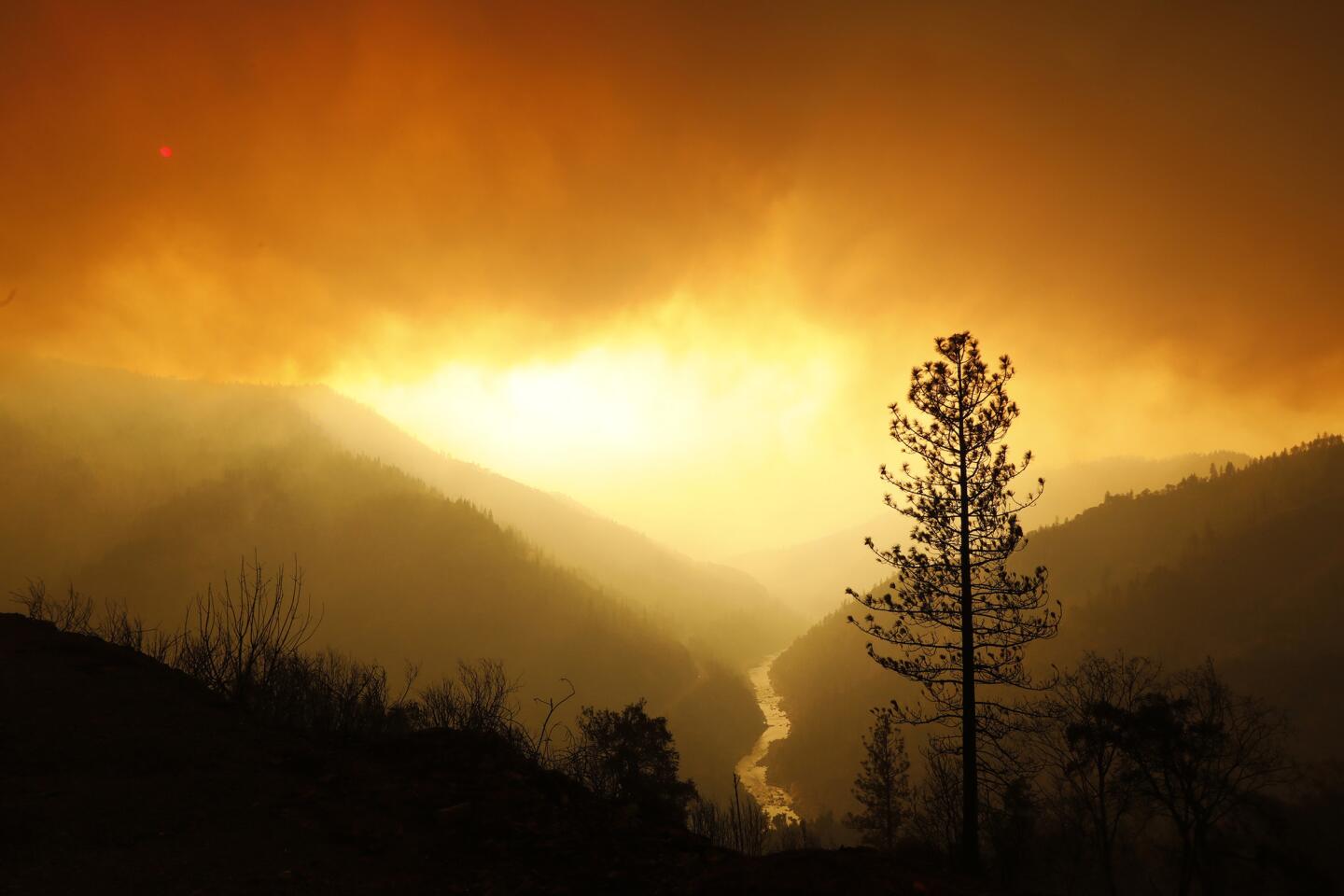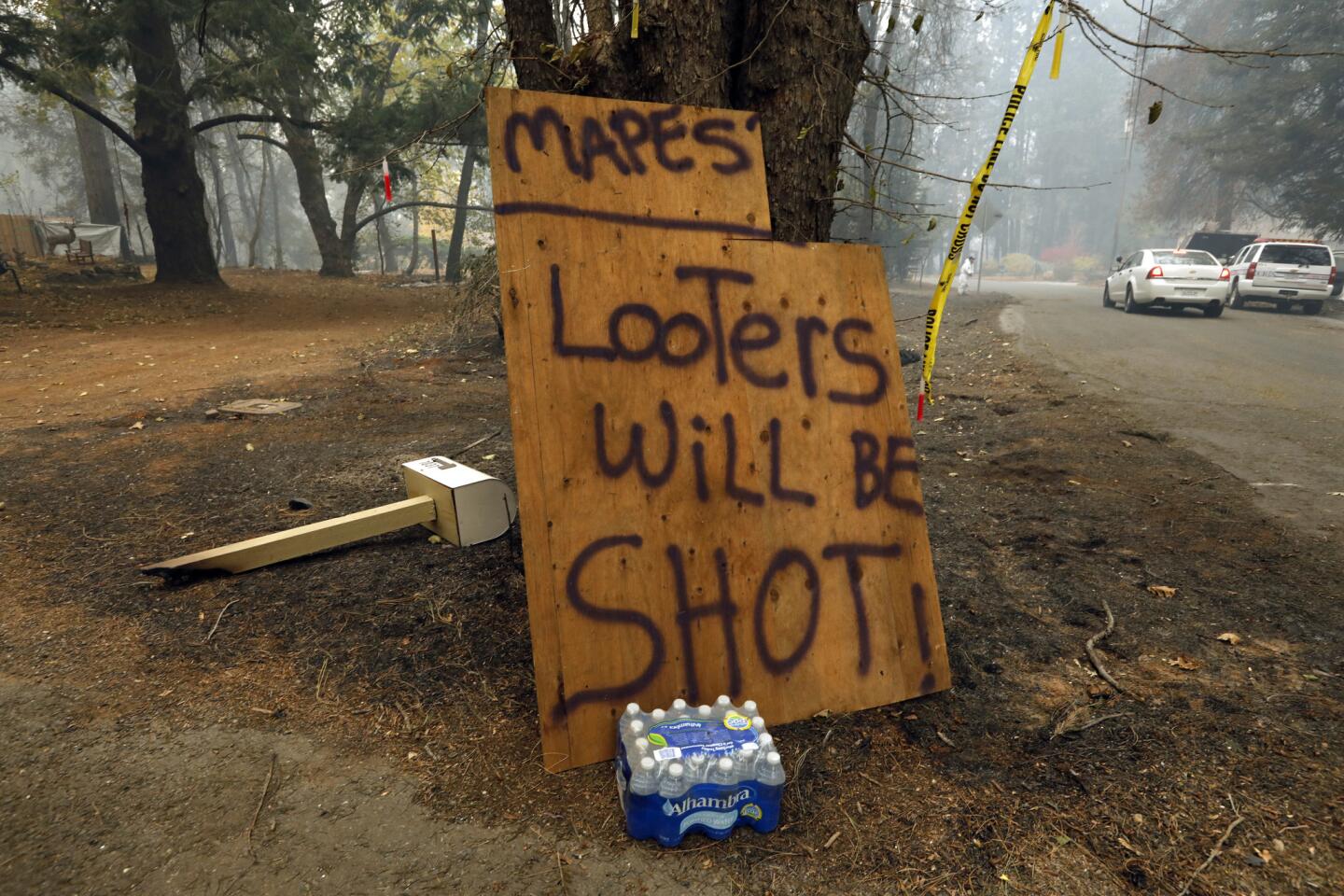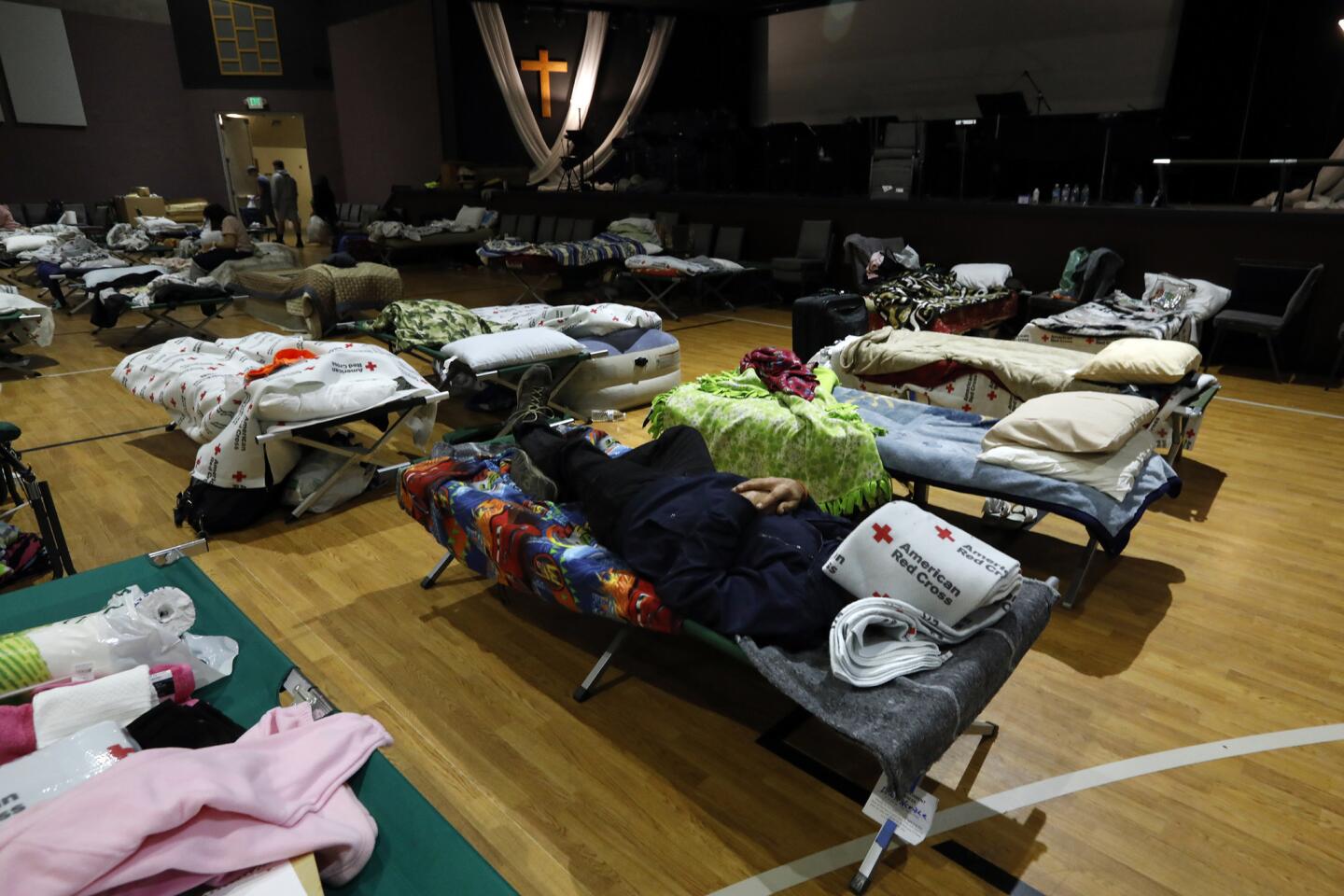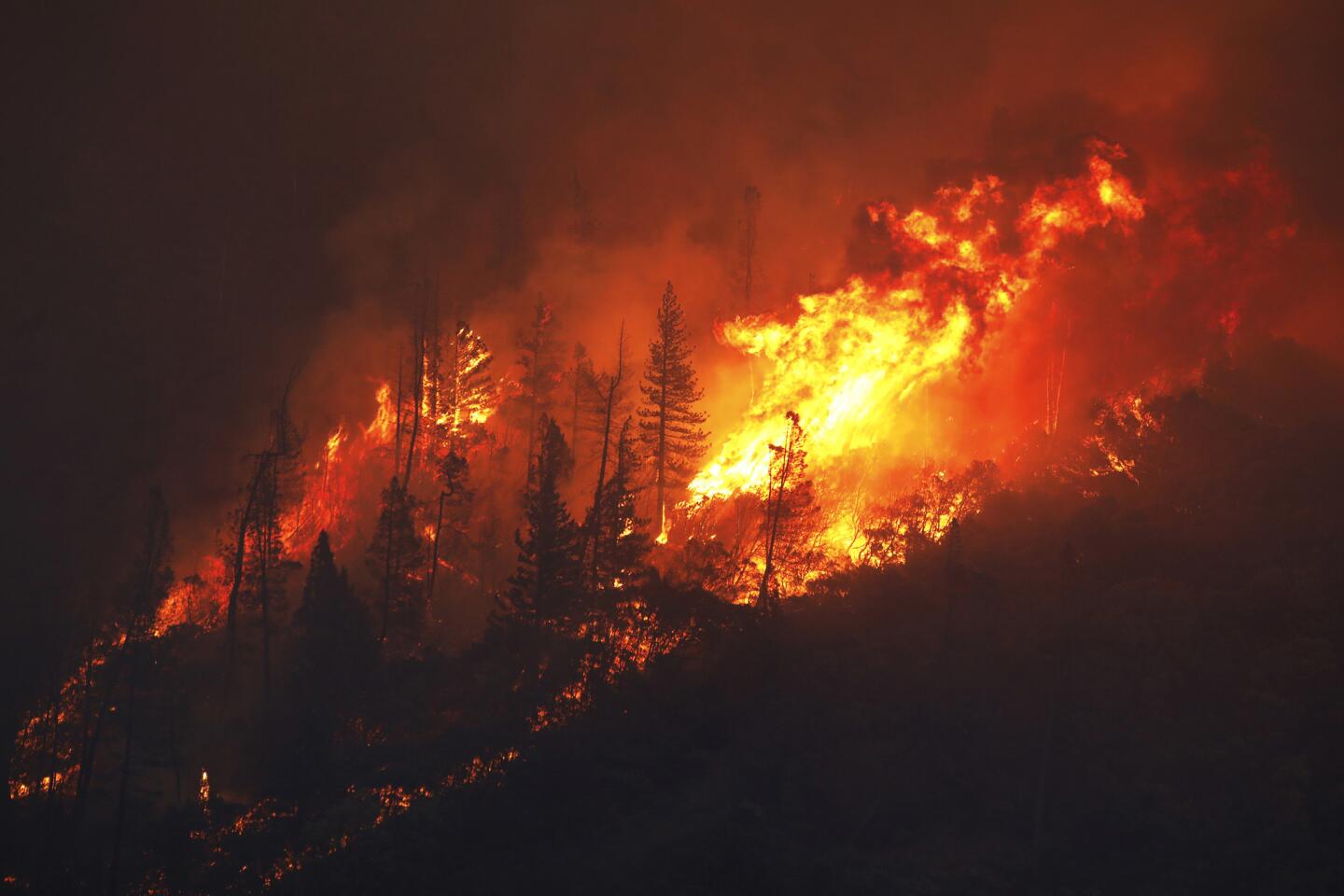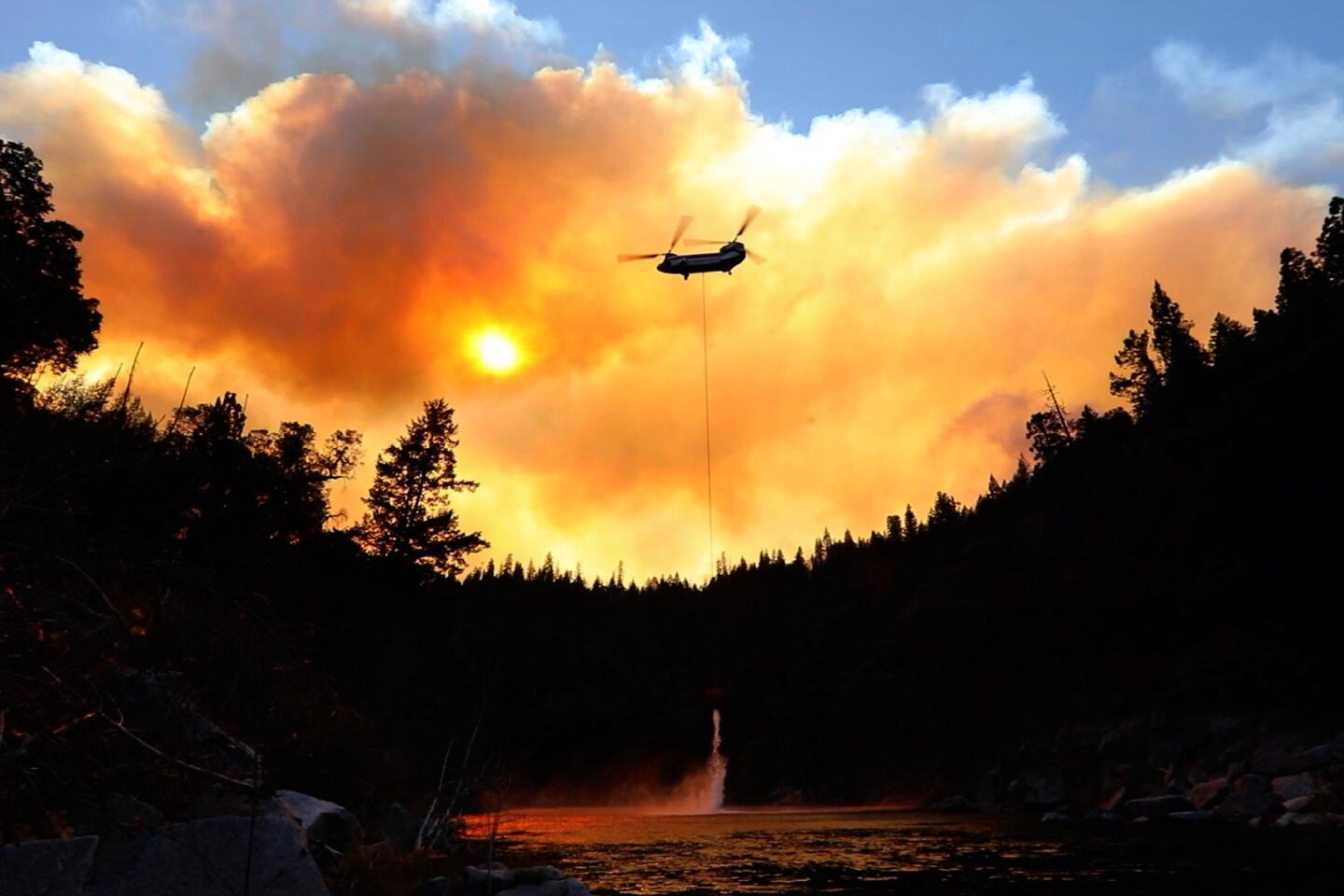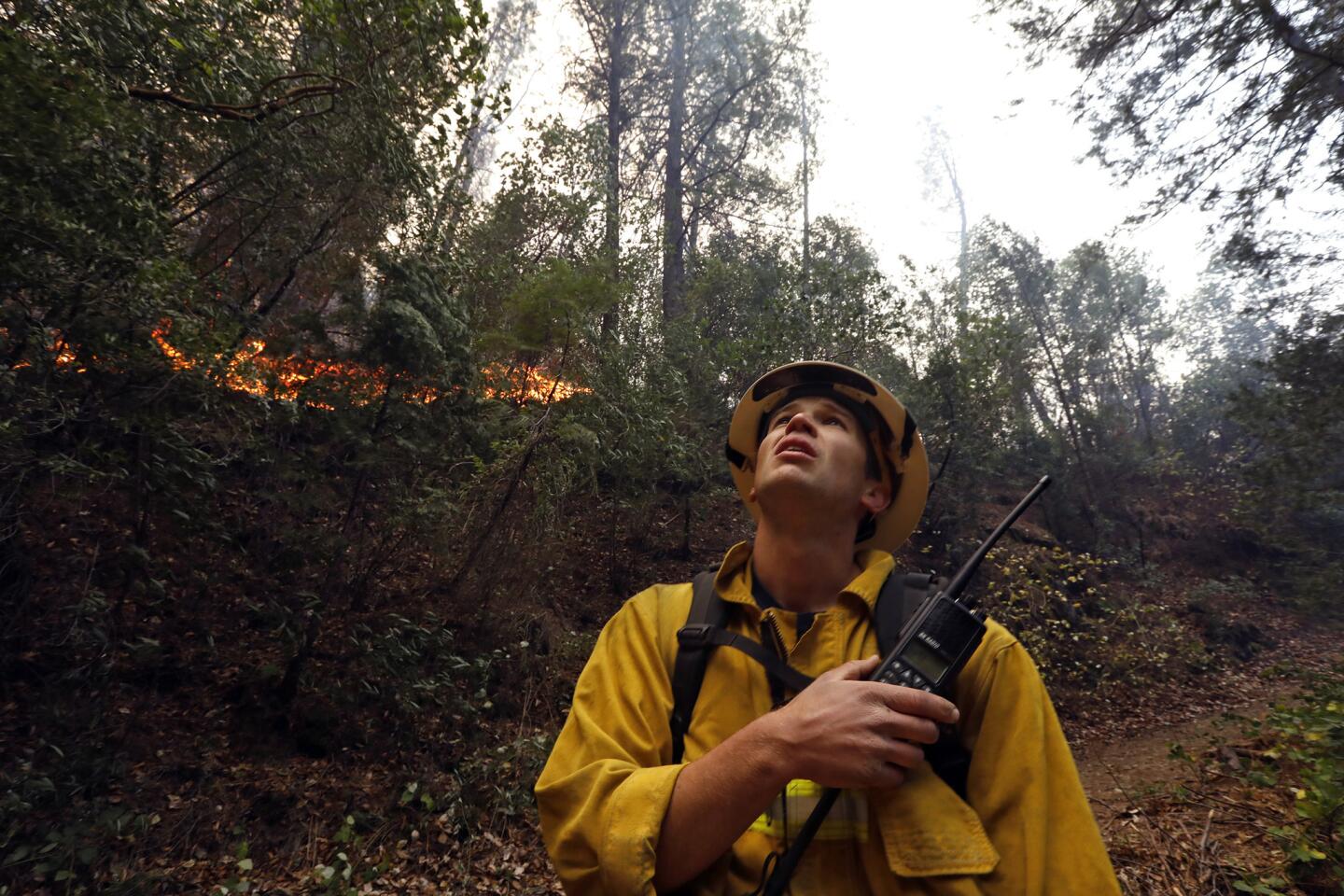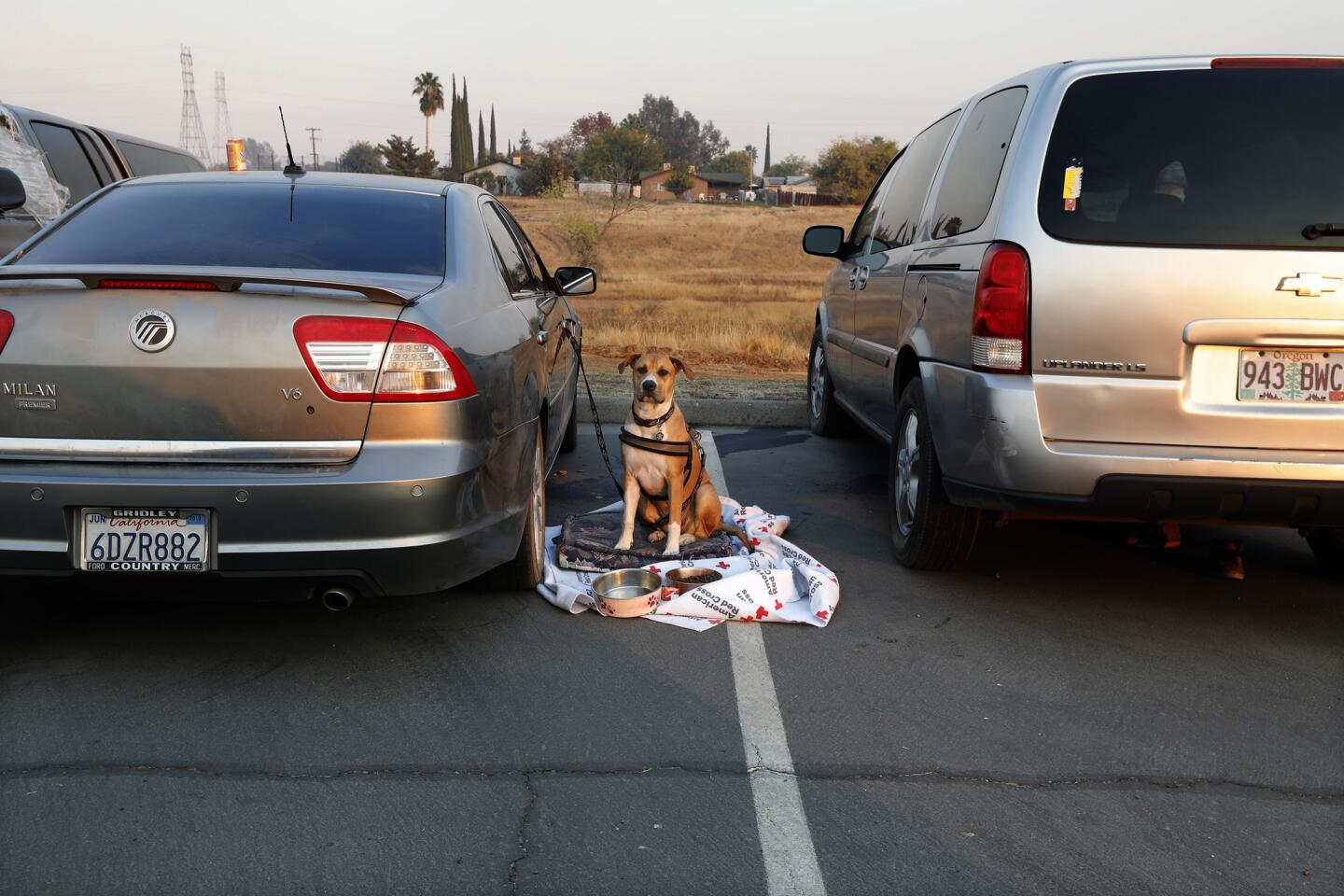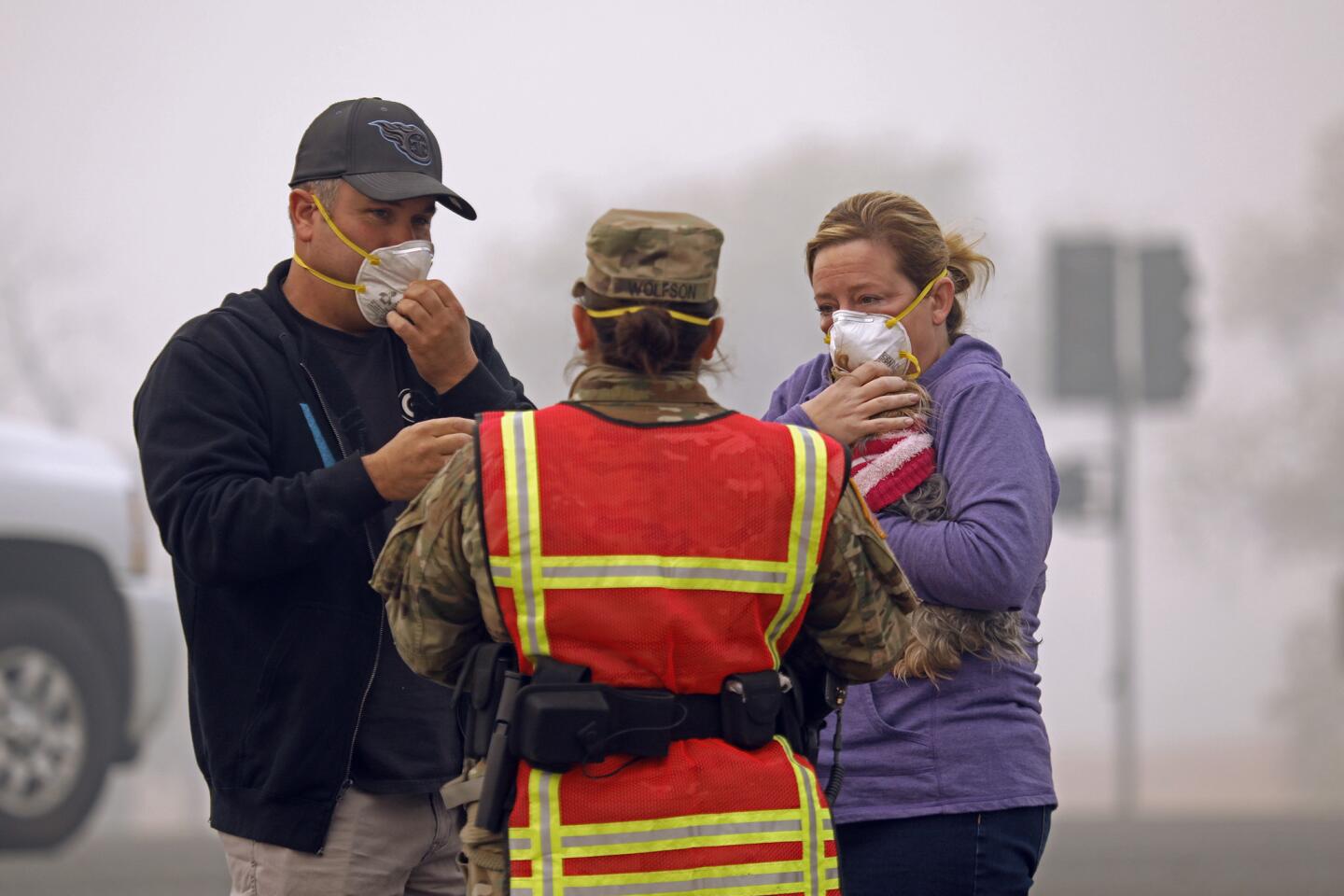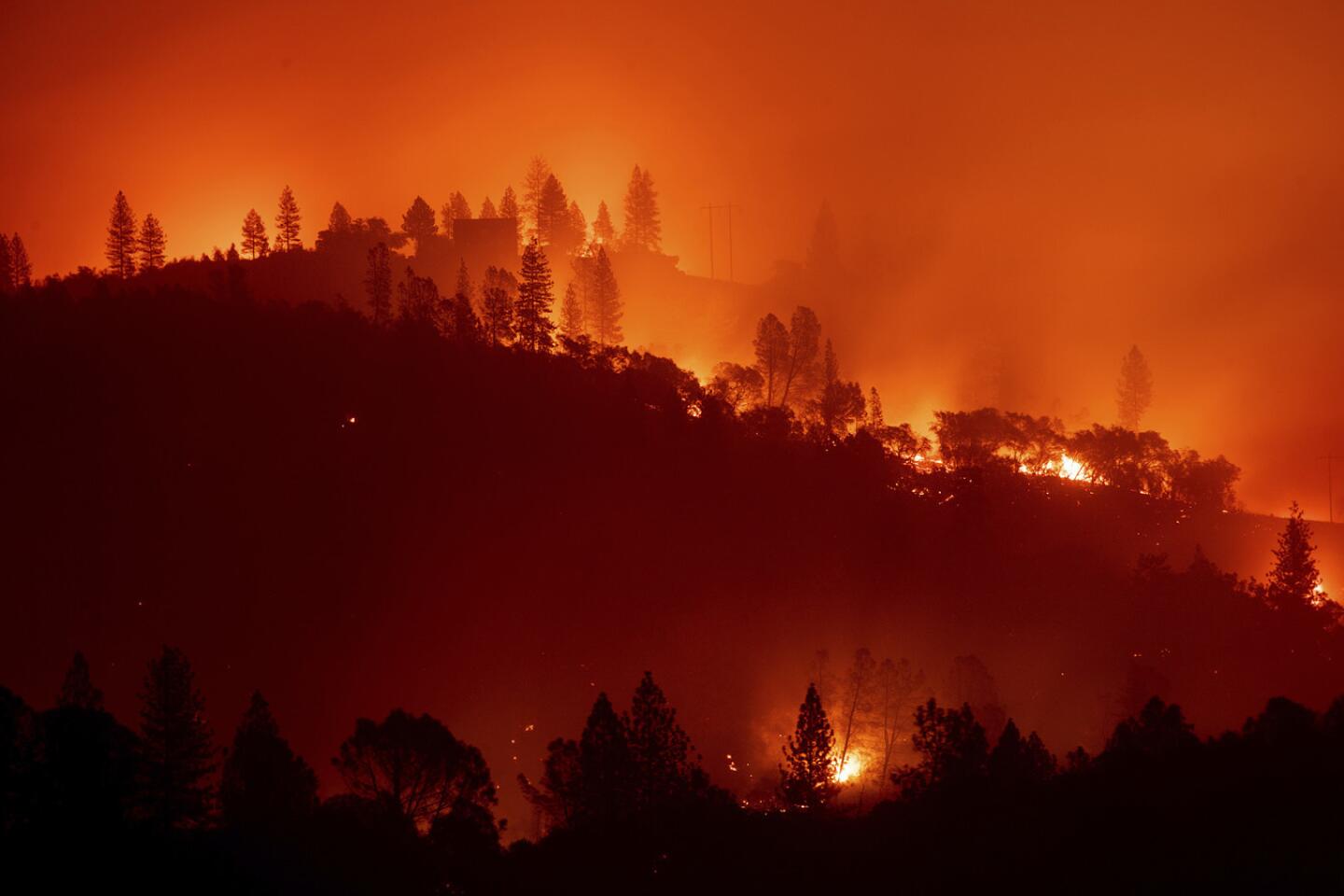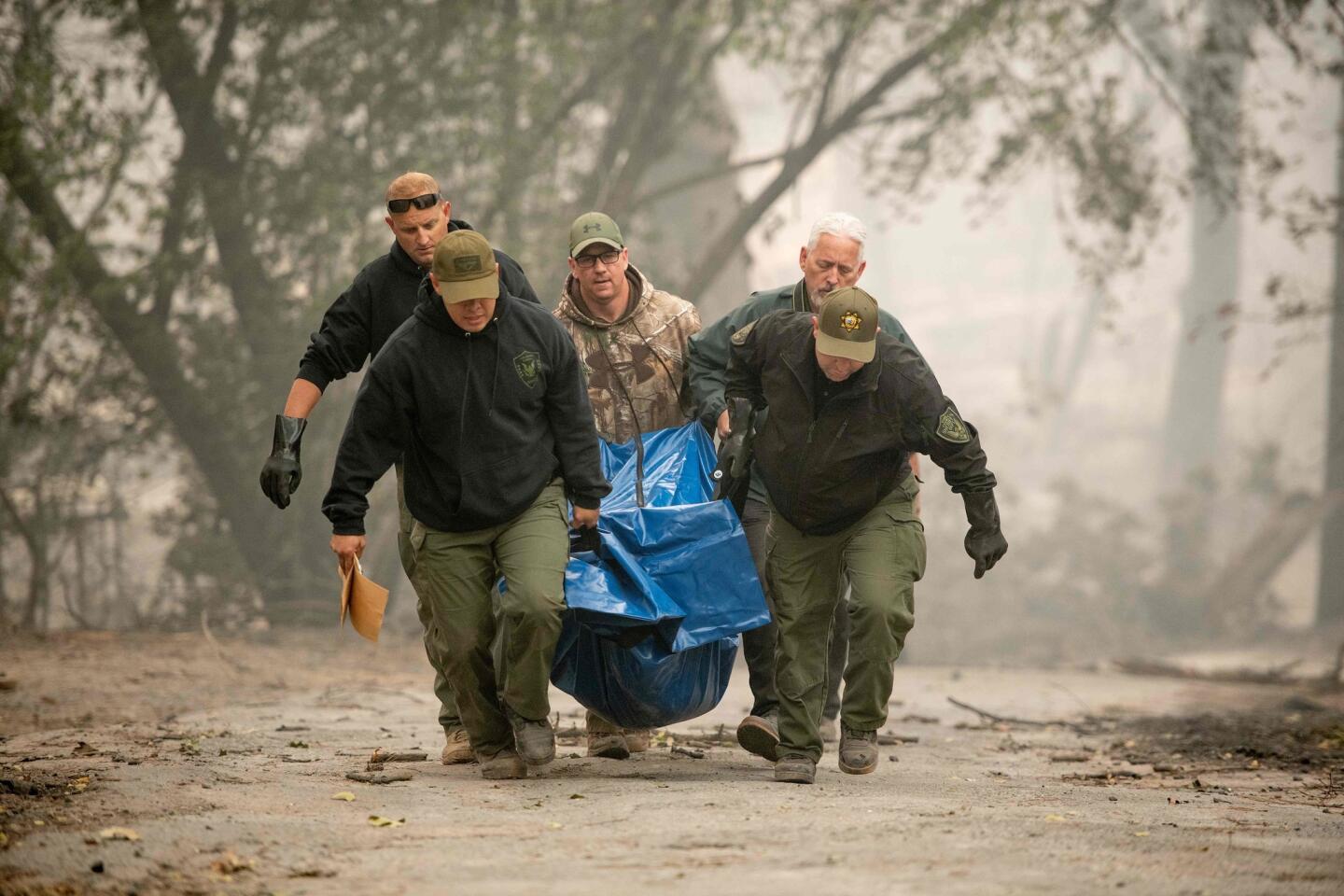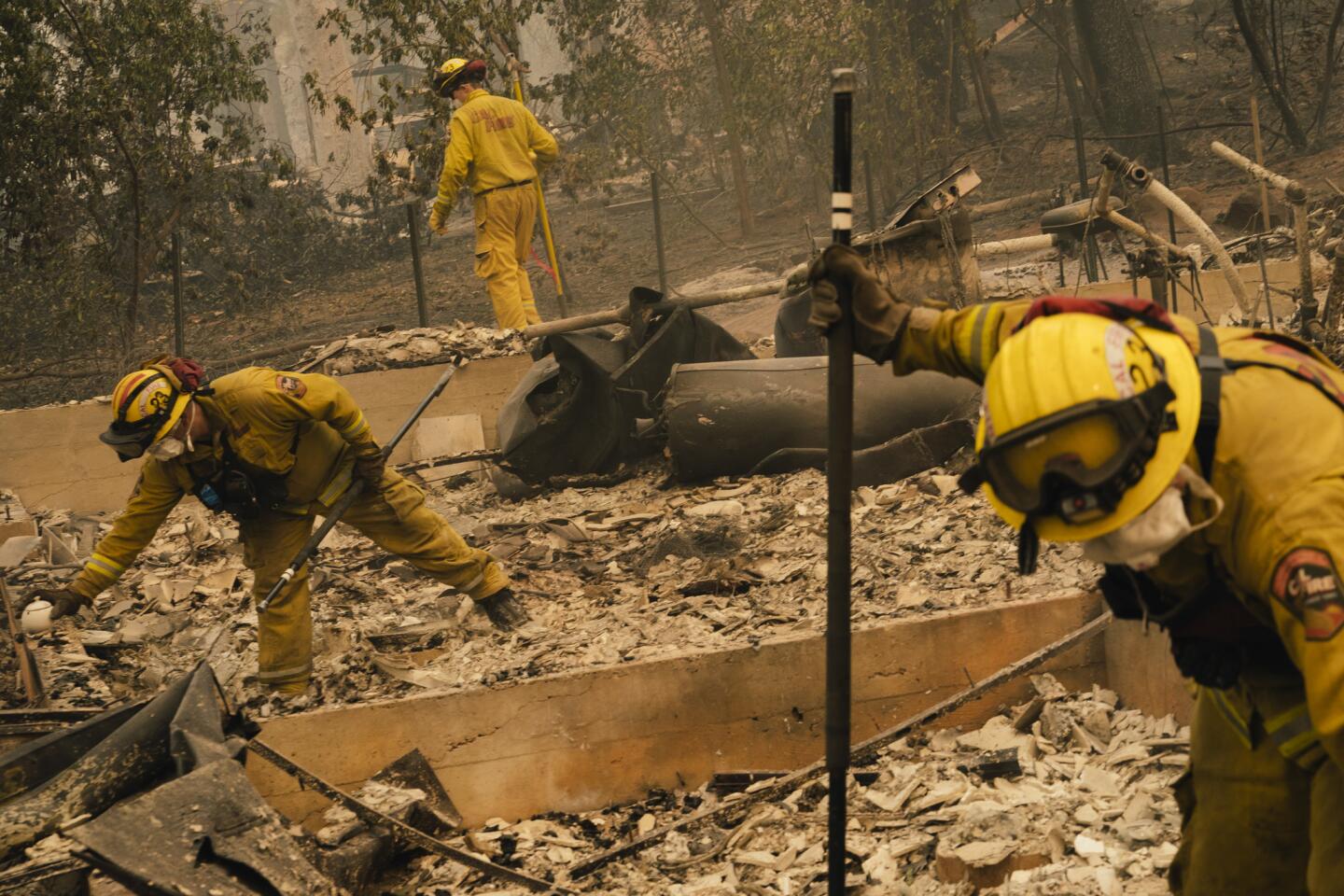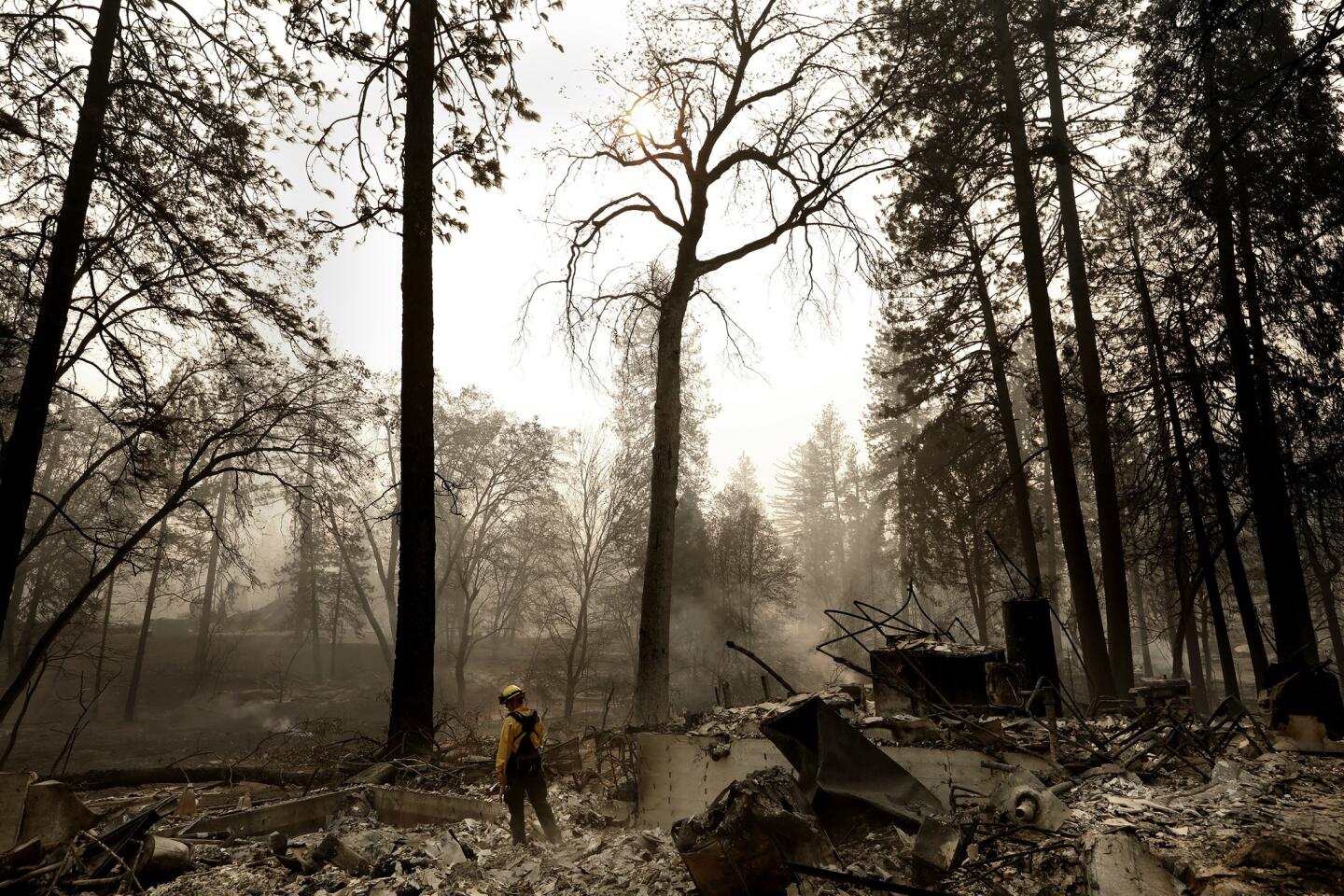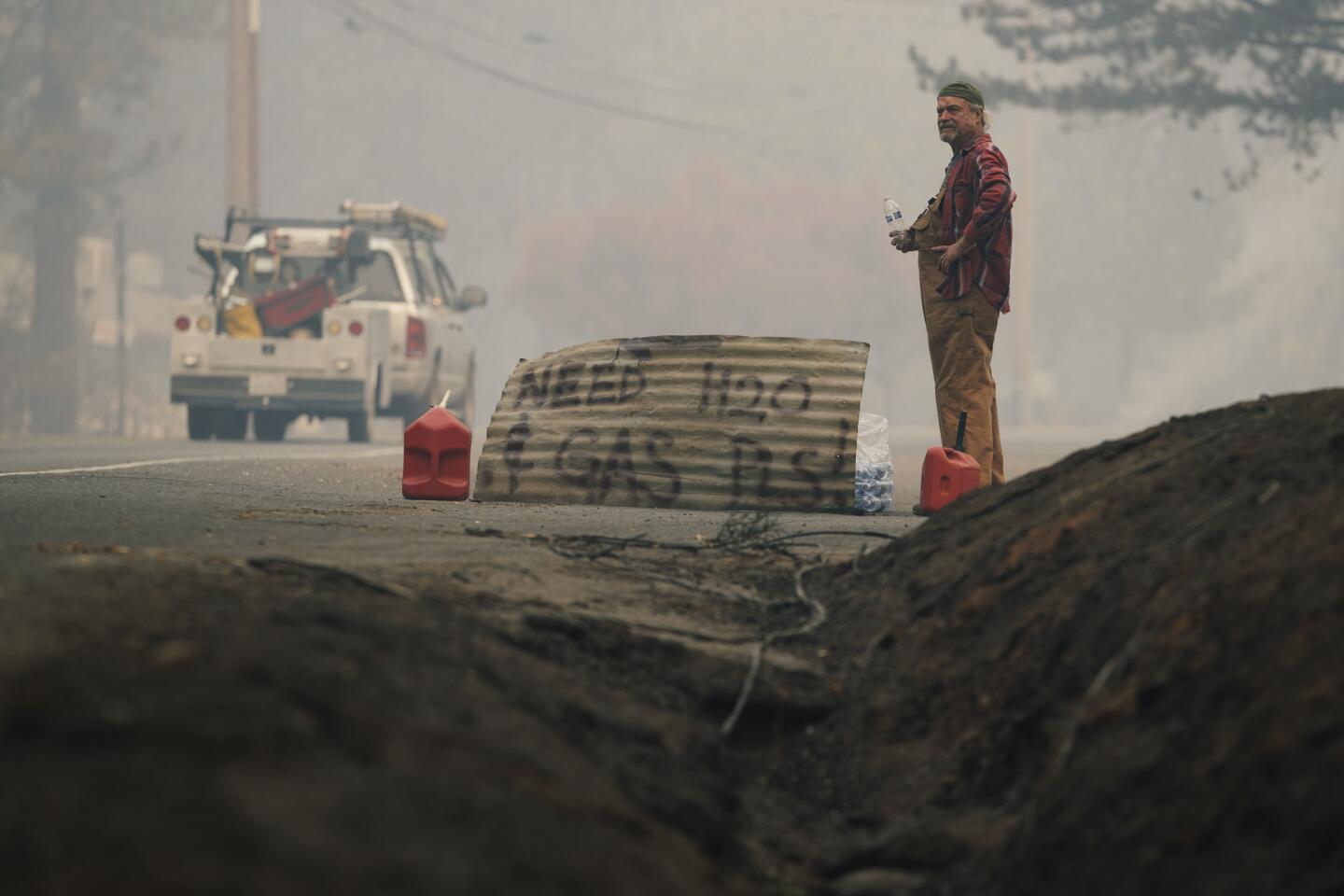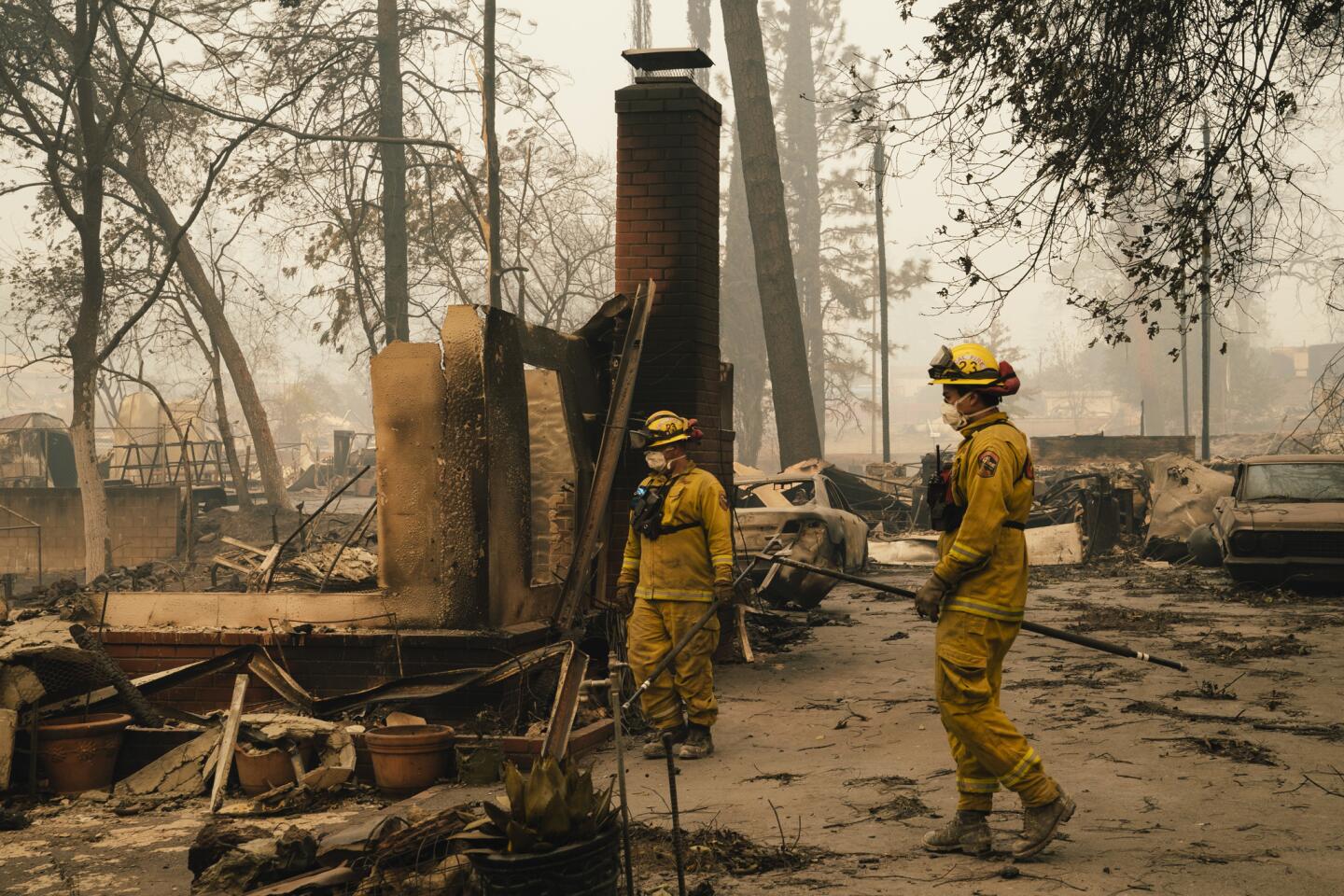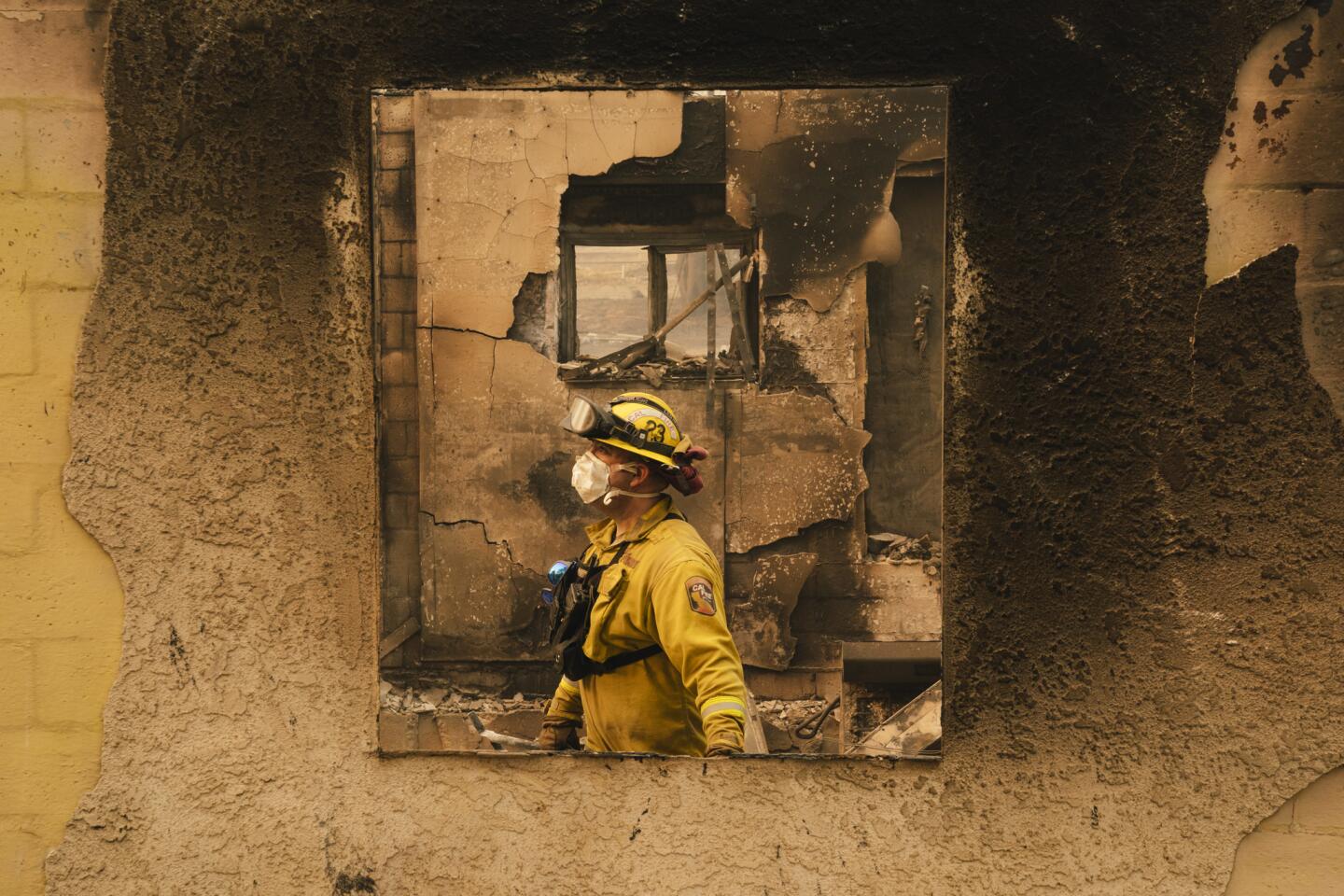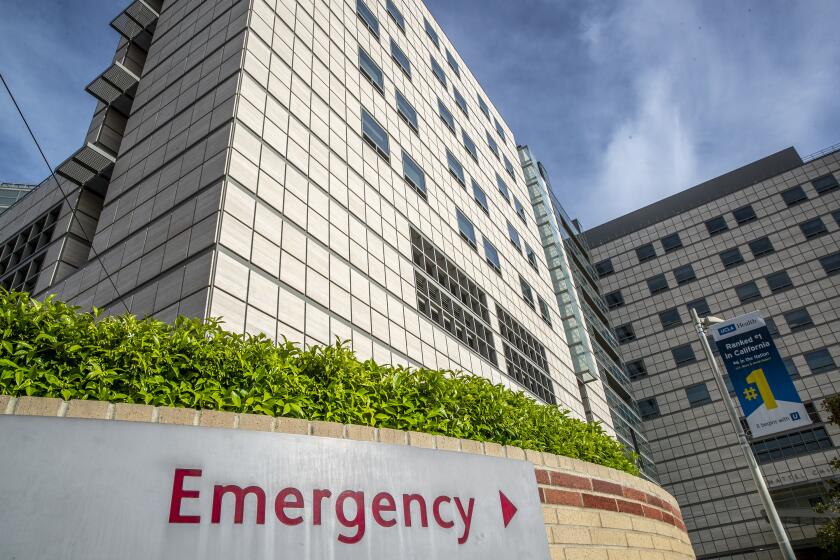California fire: If you stay, you’re dead. How a Paradise nursing home evacuated
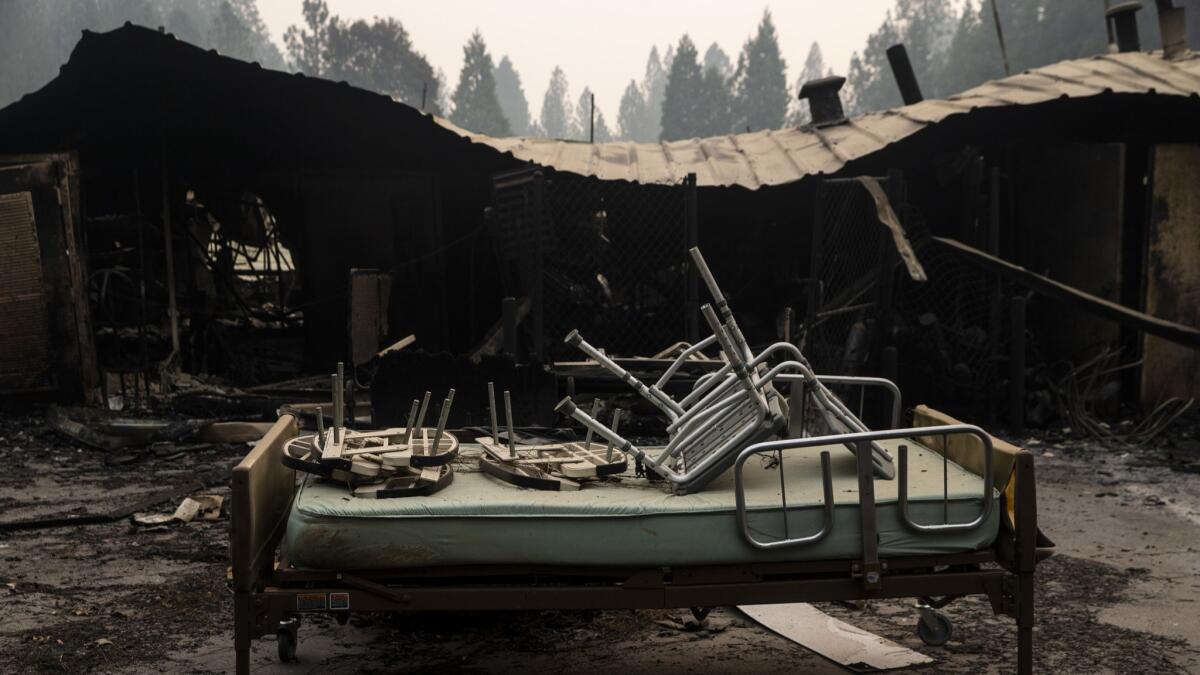
- Share via
How do you evacuate a nursing home when the deadliest wildfire in California history is bearing down and there are 91 men and women to move to safety — patients in need of walkers or wheelchairs or confined to hospital beds, suffering from dementia, recovering from strokes?
The fire is coming fast. Help is not.
Staying at the Cypress Meadows Post-Acute center in Paradise is not an option. Sheltering in place means certain death for the 30 or so staff members on hand and the patients who rely on them. A fleet of vans that might have helped ferry them to safety has been turned back because of the danger.
Sheila Craft, director of admissions and marketing at Cypress Meadows, has to find 91 beds within driving distance of this small town in the Sierra foothills. And she has to find them now.
LIVE UPDATES: The latest on the California fires »
On a typical day, there are waiting lists to get a bed at a skilled nursing home or memory care center or assisted living facility. This is not a typical day.
The fire starts about 6:30 a.m. Nov. 8, about eight miles of rugged terrain away from the nursing home. Craft sees smoke an hour later, while driving her four kids to school in this woodsy town where all of them were born.
She spots flames in the distance as she heads to Cypress Meadows.
By 7:45 a.m., she is at her desk, working the phones.
“I was calling every facility around, ‘Hey, we’re getting evacuated, this is happening, I don’t know if you’ve watched the news, but how many beds do you have available?’” Craft said. “So they’d tell me, ‘Four females and two males.’ ‘OK, I’m putting you down, I’ll take ’em.’ Then I called another facility, ‘How many beds do you have available?’ ...
“So, I’ve got one phone in this ear, calling, finding residents homes or beds, and the other phone in this ear with my 12-year-old seventh-grader standing in front of her gym with a plume of smoke, going, ‘Mom, I have to be picked up. We’re being evacuated.’ I’m, ‘OK, I’m gonna get somebody to you. You stay right there. Don’t move.’”
By the time Olivia Drummond arrives at work at 8 a.m., Cypress Meadows is “in full evacuation mode,” a process that is fraught even for the able-bodied gathering their own things and their own loved ones and leaving their own homes under their own steam.
The fire is growing.
The medical records director bags each patient’s documents, paperwork that describes who they are, how to reach their next of kin, what drugs they should take, the care they will want when they are dying. A medication nurse bags each one’s drugs. A certified nursing assistant puts together a change of clothes.
Patients are dressed and seated in wheelchairs. Bags with their drugs and clothes and paperwork are tied to the chair handles.
“We pulled them out of the rooms,” said Drummond, Cypress Meadows’ director of social services. “Our plan was to get the rooms emptied and close the door. Once the door was closed, we knew there was no resident in there.”
That way, no one would be left behind as flames licked the rafters and made their way through the nursing home’s wings.
The first 40 patients, the most ambulatory and easiest to move, head out about 9:30 a.m. Then comes an order to shelter in place. Patients who had been queued up in wheelchairs outside are rolled back into the dining area, away from the growing toxic smoke.
Just before 10 a.m., Drummond said, authorities arrive and say, “You gotta go.” Staff members line up their cars to ferry patients out. The wheelchairs are abandoned.
Drummond helps her daughter, Sarah, a dietary technician at the home, load two patients into her Ford Focus. Sarah is 19. The last thing Drummond’s husband tells her: “Don’t separate from Sarah.”
But on this terrible Thursday morning, she has no choice.
MORE: Track key details of the California wildfires »
Drummond is 4½ months pregnant. She had planned to take the passenger seat. But one of the patients needs it because she doesn’t fit in back. And Drummond can’t squeeze in either. So she sends the car down the hill.
Sarah will not be heard from for the next 10 hours. Her parents won’t know if she and her passengers made it out alive.
Craft pulls her white Chevrolet Suburban to the Cypress Meadows entrance. She’s not a nurse, so she will be driving patients who do not need complicated care. Two women and a man — one stroke victim, two with Alzheimer’s disease.
They are headed to Roseleaf, a memory care facility in Chico, about 16 miles away, a 30-minute drive when the world’s not ablaze. On this day, it will take nearly seven hours.
Craft pulls into gridlock headed south. She considers piloting her truck down a bike path and through a trailer park. But the bike path is on fire. She sees there are no cars in a northbound lane, so she takes it, heading south — and then comes upon flames at an intersection.
Ahead of her is a line of stopped cars. To the left is a tall tree on fire, a medical building ablaze. A fire tornado swoops by, along the driver’s side of her Suburban. She is on the phone with her husband. She is certain that she and everyone around her will die.
“My side [of the car] was hot,” she said. “There was fire right there. I was sick to my stomach. I’ve never been so scared. I was telling my husband goodbye. He was with my kids. He kept saying, ‘No, no, no.’ He was praying an angel to come to me, somebody who would help me, get us out of here.”
Craft chokes up as she relives this. Her face is flushed. Tears start to well. Six days have passed since fire destroyed her hometown. It hurts.
“I just told him, ‘I don’t think that’s true. I can’t talk my way out of this. I can’t make this go away. I can’t get out of this situation.” She is crying in earnest. “He goes, ‘You do what you have to do. You have to drive around people, you drive around people. You get off that hill.’”
She jumps a curb, makes some headway, jumps another, pops a tire.
Craft pulls into the parking lot of the local Safeway. She cannot find the jack to change the tire.
Then, she says, a little electric-powered Ford pulls up, a car “that my husband and I would never own in a gazillion, million years.”
Behind the wheel is Nate Reich, operations general manager for Safeway in Northern California. He wants to drive her to safety. But she has the three patients with her. She asks for help with the tire.
Still no jack. Safeway goes up in flames.
But Sheila Craft has found her angel. Somehow, the three frail, elderly patients and Craft all jam into Reich’s little Ford. He points the car south. The sky is black as night.
A week passes. All 91 patients have been resettled. Four are now with family, the rest spread among 15 nursing homes and two hospitals.
Cypress Meadows is gone. Plum Healthcare Group, which owns it and 55 other facilities in California and Nevada, has held two job fairs for its displaced workers and hopes to employ them at its other properties. No decision has been made about rebuilding, said Aaron Edmonds, Plum’s area president.
Sarah Drummond and the two patients in her care sheltered in place with other evacuees and law enforcement agents, first in one Paradise parking lot and then another, wrapped in fire blankets. She plans to leave California.
Olivia Drummond does not know if her house in Magalia is still standing. She had a prenatal checkup on Wednesday. She heard the baby’s heartbeat.
And Craft went back to see her house and the nursing home for the first time since flames rushed through the town she loves.
Both were destroyed.
All that is left of Cypress Meadows are a wavy metal roof and a tangle of ruined equipment. The abandoned wheelchairs, most badly burned, remain queued up in front of what was once a graceful entrance.
Their big tires lie on blackened ground, reduced to circles of white ash, which crumbles when touched.
Twitter: @marialaganga
More to Read
Sign up for Essential California
The most important California stories and recommendations in your inbox every morning.
You may occasionally receive promotional content from the Los Angeles Times.
